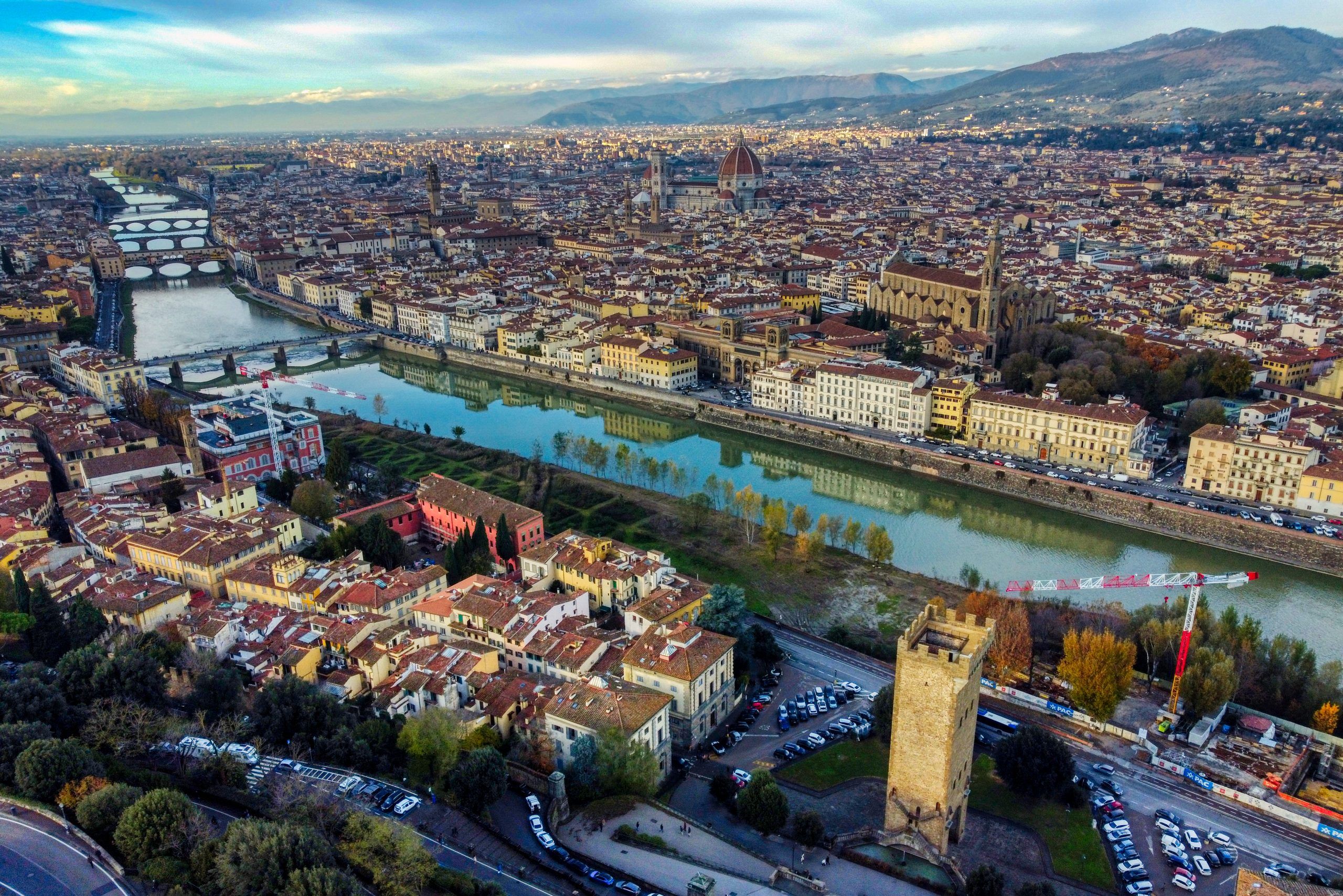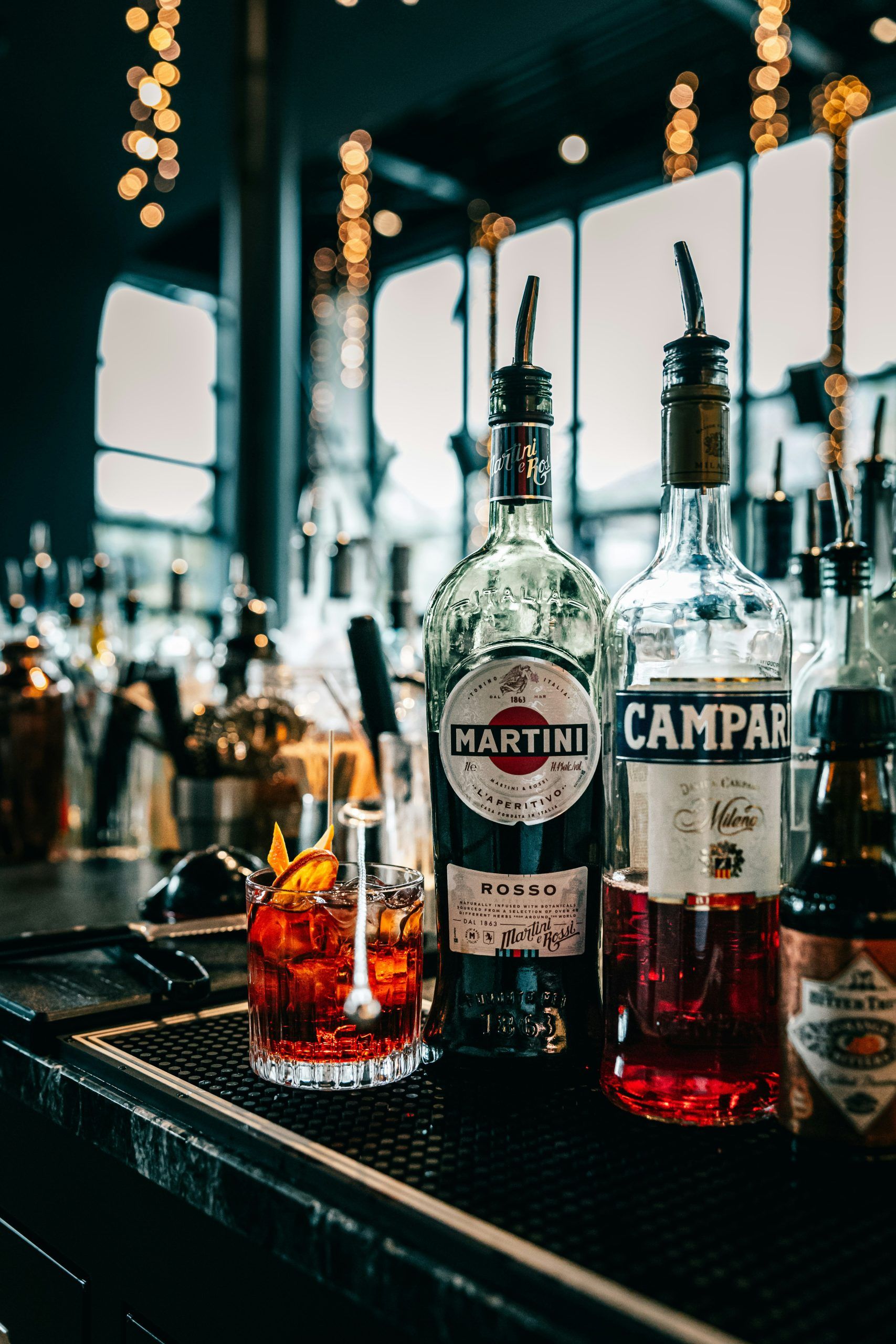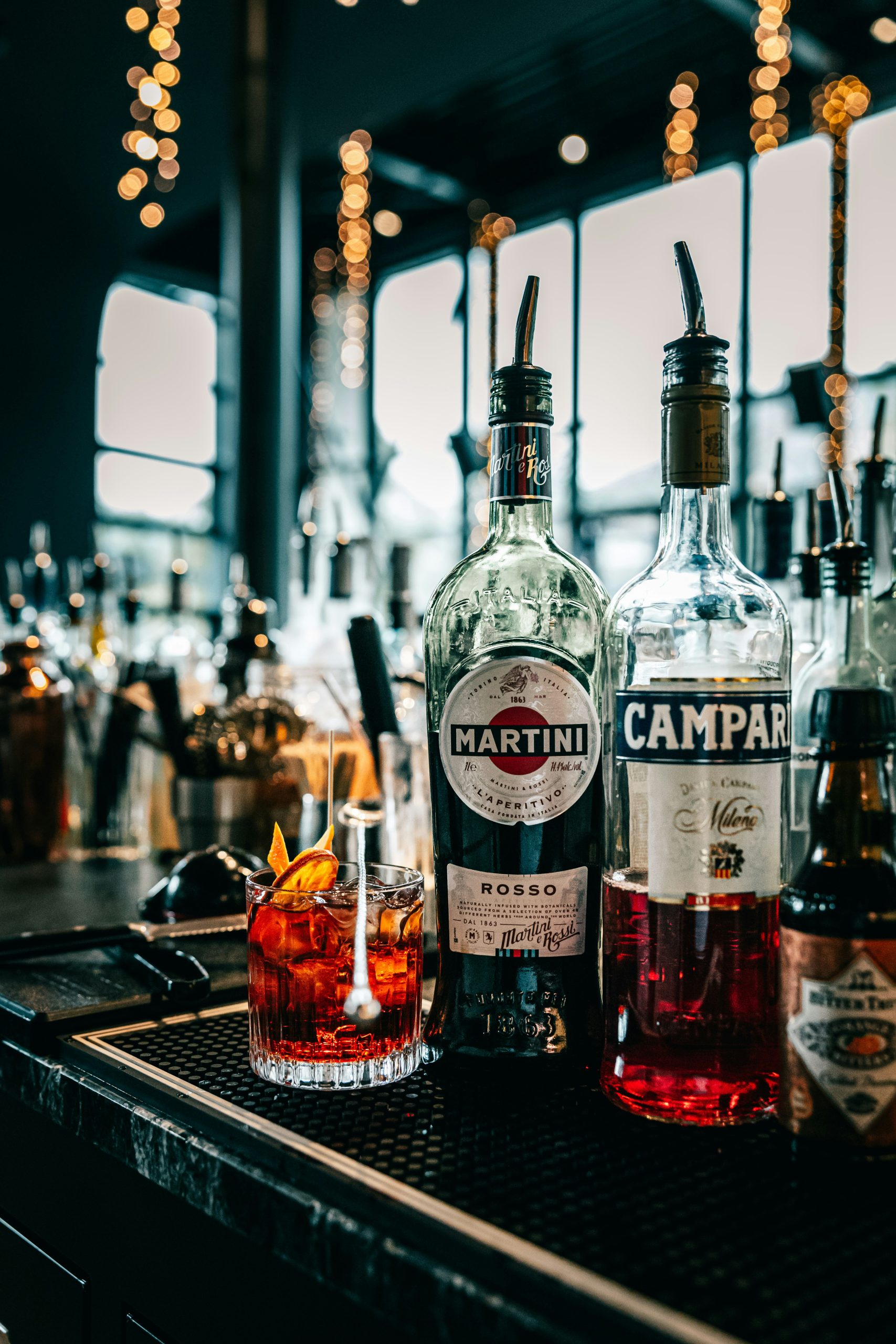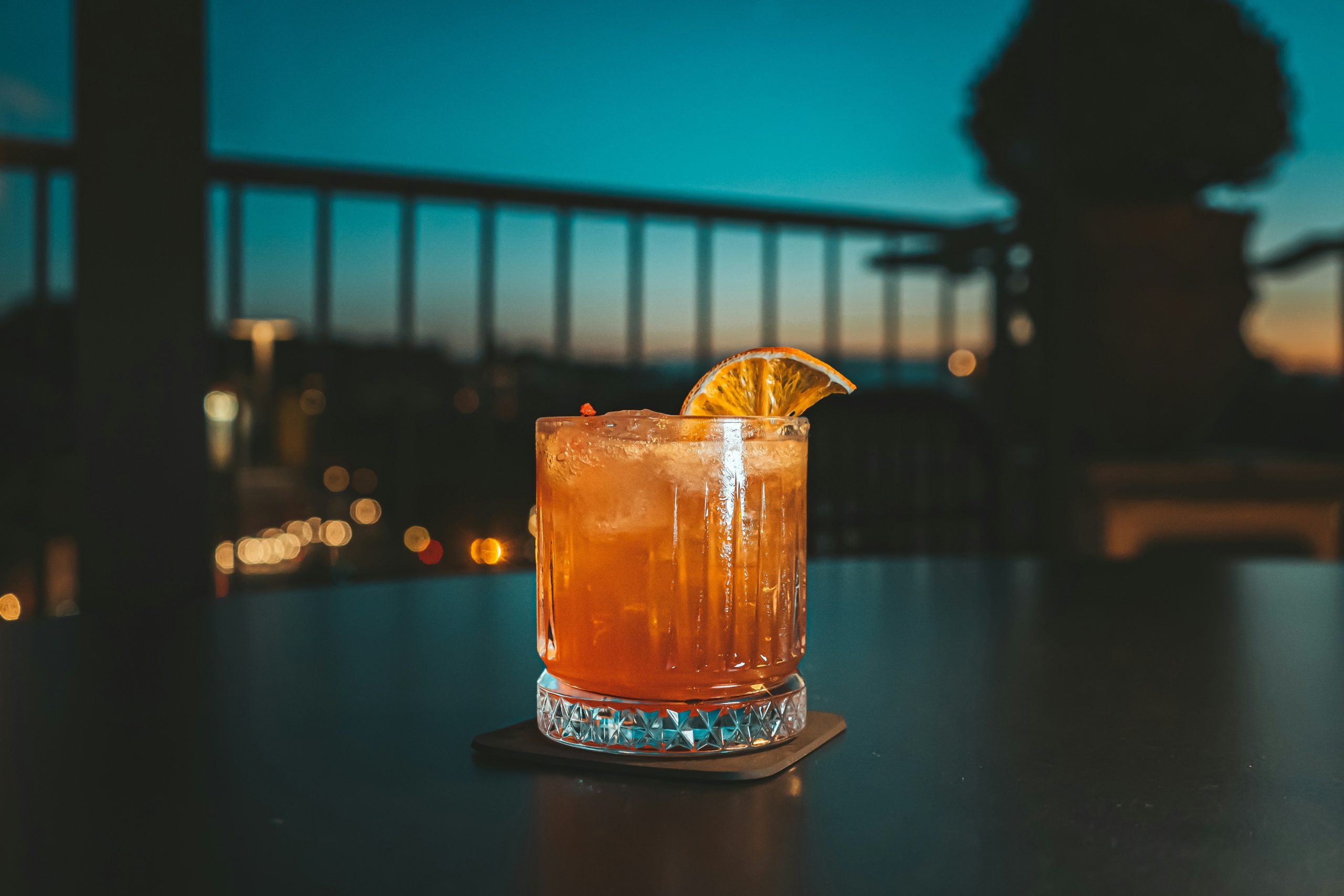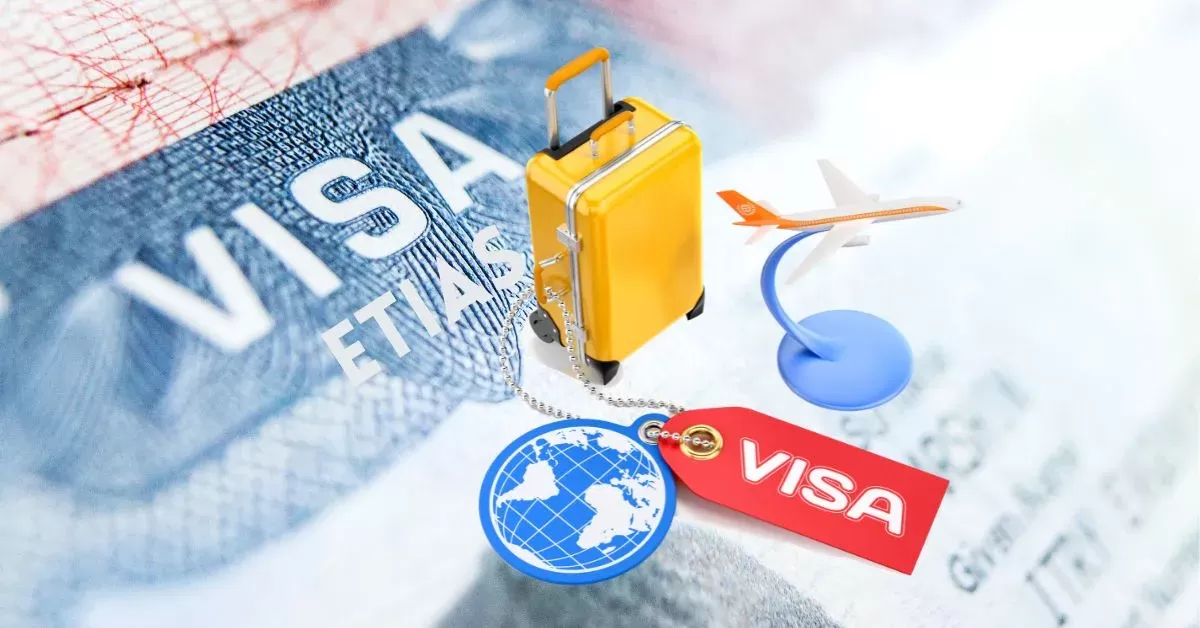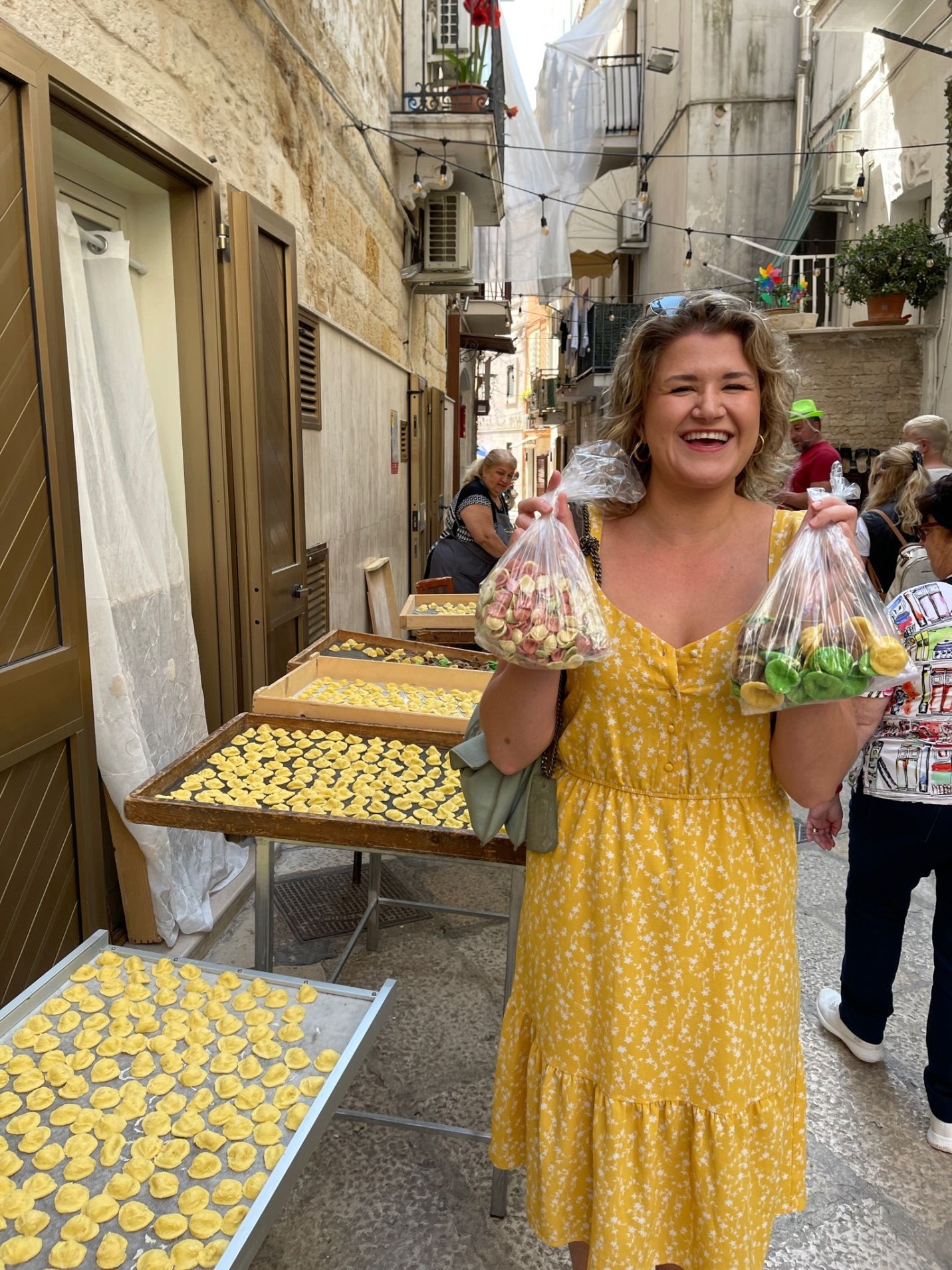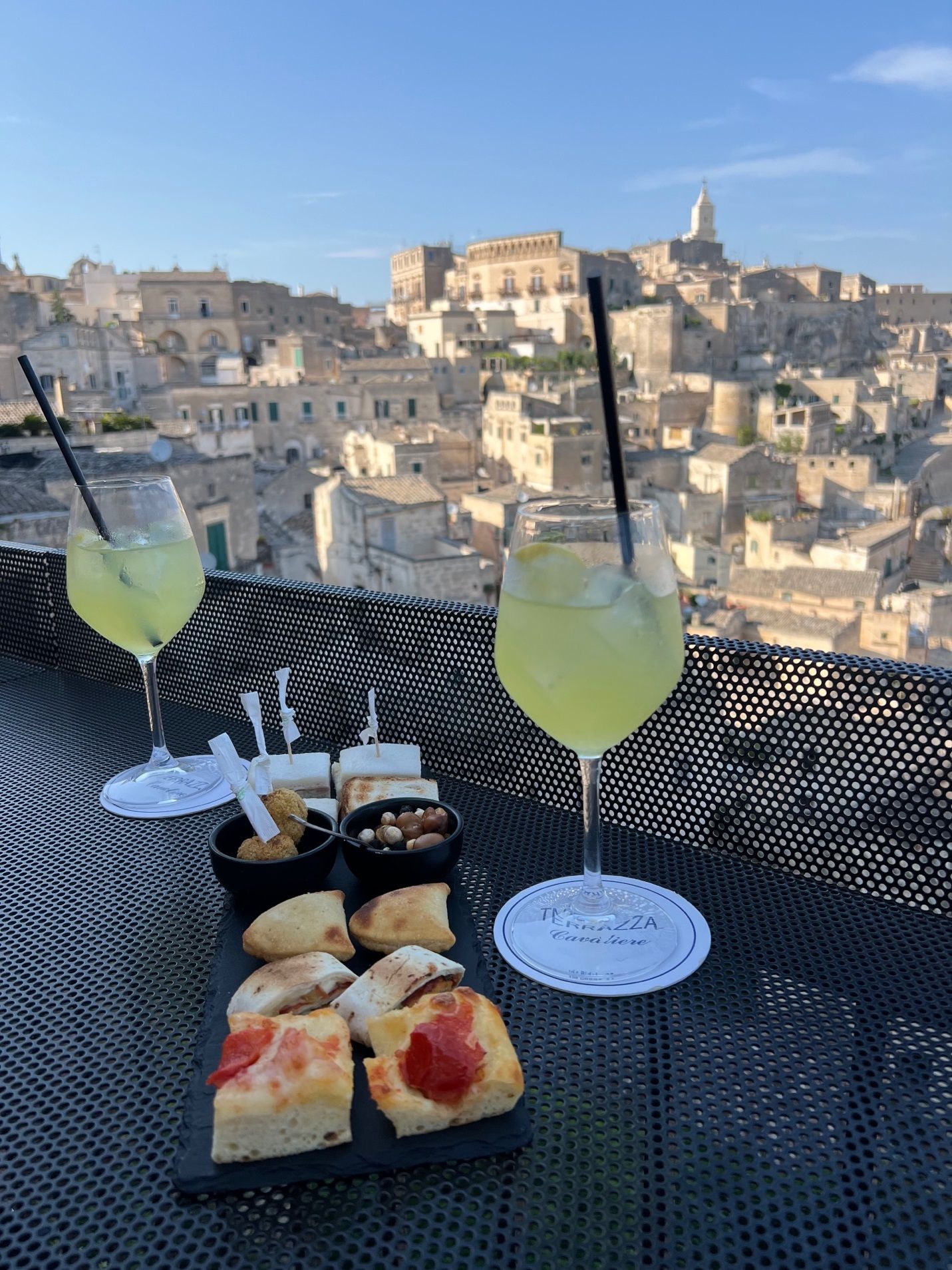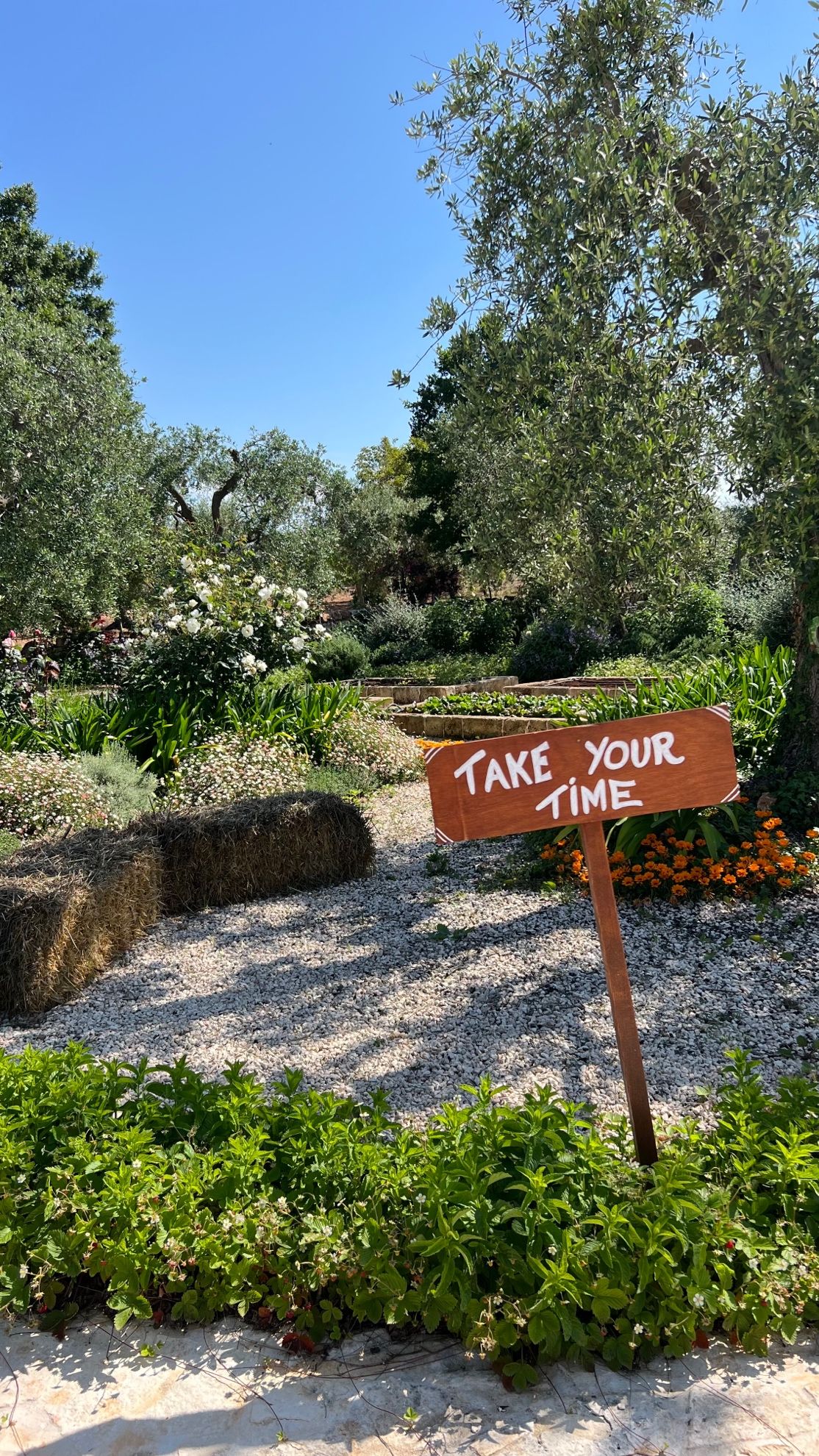16 Hotels in Florence for Every Budget
20 December 2024
16 Hotels in Florence
(for every type of budget!)
Finding accommodations for every type of traveler, from the best value hostels to the most extravagant hotels (and everything else in-between)
For the first part of an extensive blog series covering hotel recommendations, it’s natural for me to start with Florence, Italy. As I’ve surely mentioned a time or two, I live in Florence–so I’ve visited many of these hotels and stayed in several.
In many ways Florence is a hidden gem of sorts–a beautiful city that gets pushed to the background of the picturesque Tuscan region it’s the capital of, too often languishing at the end of Italian tourist’s highlight lists, behind the heavyweights like Rome, Venice or Milan.
Beyond my familiarity, maybe beginning with Florence is merely a subconscious shout-out to my adopted home. After all, It’s tough to be impartial when it comes to a city you live in and love. Either way, this Birthplace of the Italian Renaissance, situated along the historic Arno River, is a city all visitors to Italy must see for themselves.
Forbes has named Florence one of the most beautiful cities in the world. Not surprising, really. After all, Firenze, the city’s name in Italian, has etymology that traces to mean “Conveying Good Luck”, and Florence from Latin means “To Blossom” — kind of a perfect combination of descriptors from the earliest visitors to this little slice of paradise under the Tuscan sun.
($) The Most Budget Friendly
Room Shares for as Little as $20/Night
-

ostellobelloflorence
-
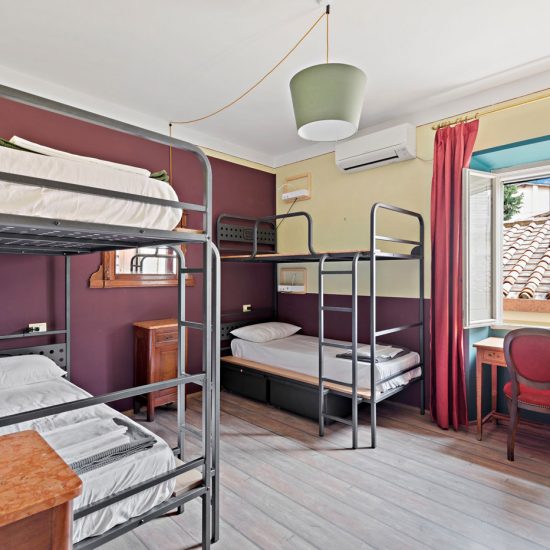
ostello4
Ostello Bello Firenze is a hostel located right in the city center, a great location with easy access to all the sights and sounds of Florence. For single travelers or small groups of friends it’s an unique way to experience the city, as they plan daily activities that promote socializing. With games galore and a bar/lounge on street level it makes for a fun and festive atmosphere, with no shortage of opportunities to meet both locals and international tourists alike. Bonus for a staff that goes above and beyond, insuring clean facilities and a safe environment. A friend of mine told me it reminded her of a cruise ship, the way it was a melting pot of people who all were there for similar reasons, looking to see the city and have fun. I kinda like that analogy.
-

yellowsquare1
-

yellowsquare2
YellowSquare Florence is also a hostel, although located about a 10 to 15 minute walk from the city center. YellowSquare operates several hostels throughout the country, and are generally well regarded. If Ostello Bello is the “Singles Cruise”, YellowSquare may be the “Romantic Getaway” as couples seem to prefer this hostel–but you’ll find plenty of activities, including a nightclub, here as well for travelers of all types. A great thing about YellowSquare Florence is that all rooms include a private bathroom complete with shower and hairdryer, things not to be taken for granted when you book a stay in a hostel. Florence airport is also just a little over 4 miles away.
($$) Quality, Inexpensive Hotels
Affordable Options with Perfect Locations ($100-150)

-
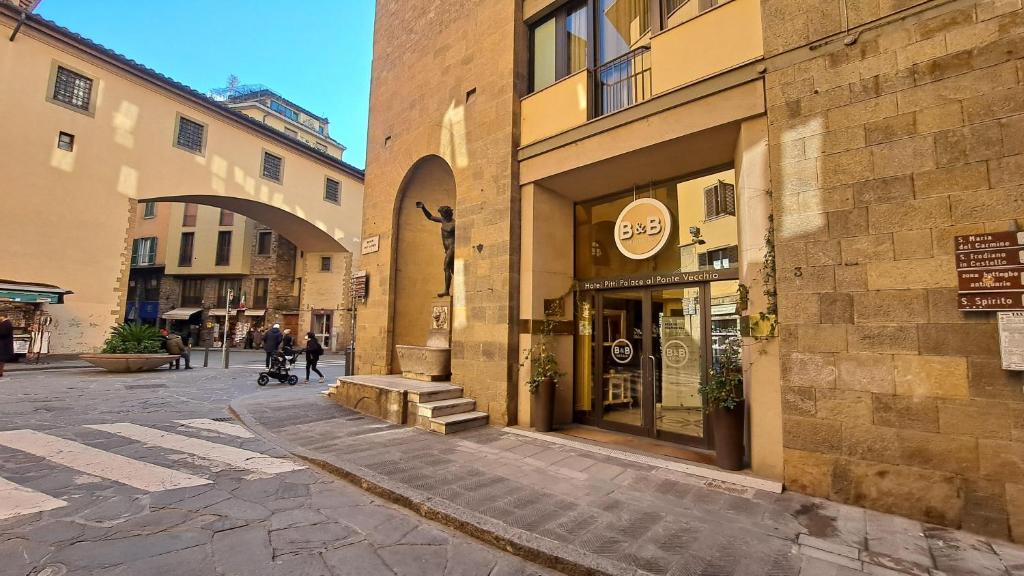
HotelPittiPalace
-
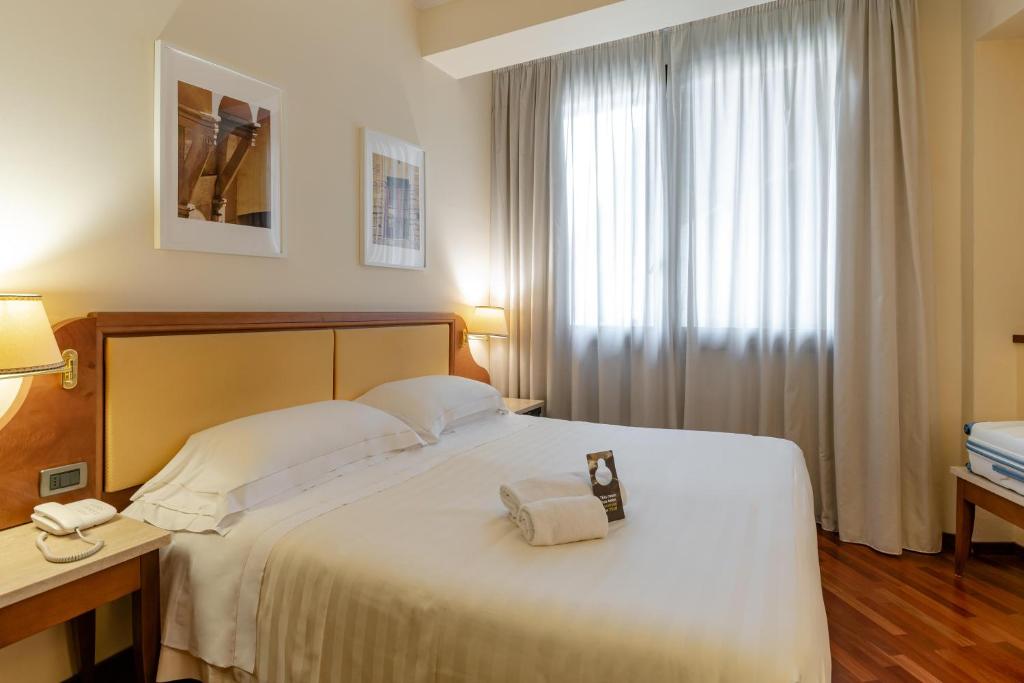
HotelPittiPalaceRoom
B&B Hotel Firenze Pitti Palace al Ponte Vecchio, other than being a mouthful to say to a cab driver…or of course the better option of Welcome Pickups…might have an argument for “Best Hotel Location in Florence”, if such an award existed. It really is in a perfect spot. Features rooms that look out over the scenic Arno River, a 360 degree, panoramic roof terrace (with a rooftop bar, I might add) and…well…location, location, location. As in, sits in a 13th century tower right smack dab next to the famous Ponte Vecchio Bridge. While the rooms and amenities aren’t luxurious, you can’t put a price on the views at Hotel Pitti Palace.

-
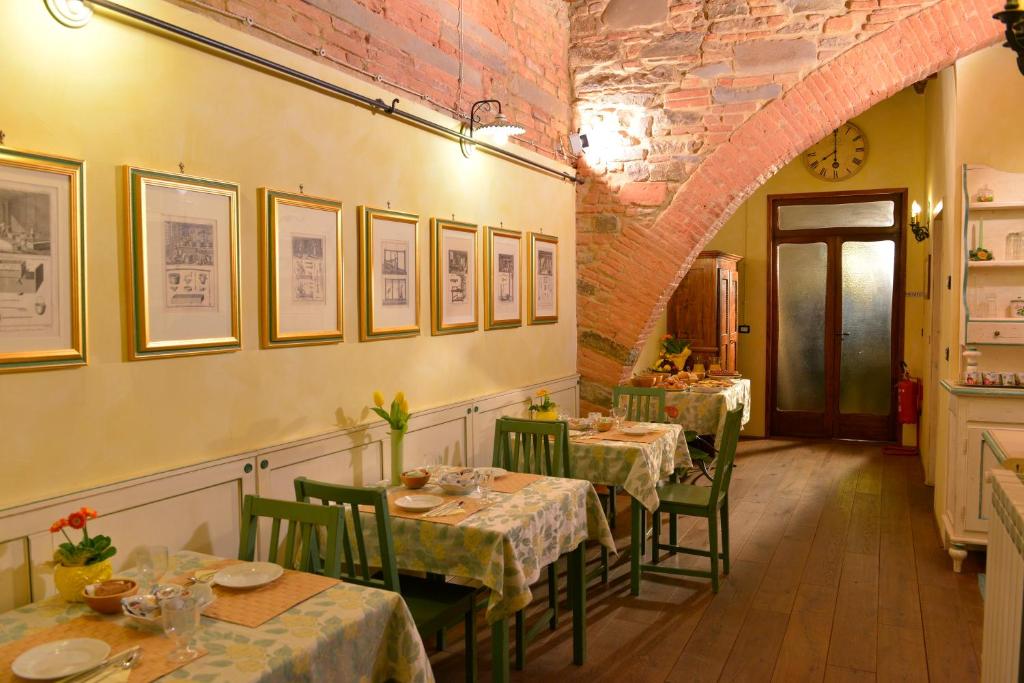
LaCasaDeiTintori2
-
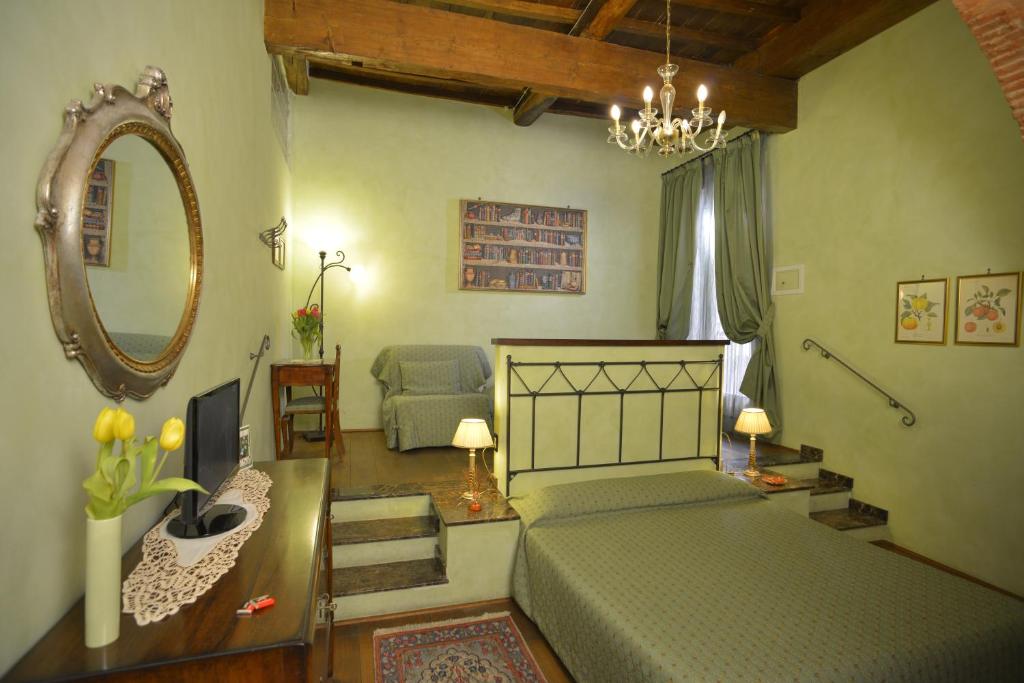
LaCasaDeiTintori3
Sitting inside an over 400 years-old building, La Casa dei Tintori is a family run B&B that’s less than a mile from the city center. The aesthetics of the B&B are, for Americans like me, reminiscent of the charming, country B&B’s prevalent in the American south and heartland–and yet at the same time everything about the place is unmistakably Italian. And you know that whole “southern hospitality” B&B thing? Just read the reviews on Booking.com…this Riccardo, man, he’s one popular host.
-
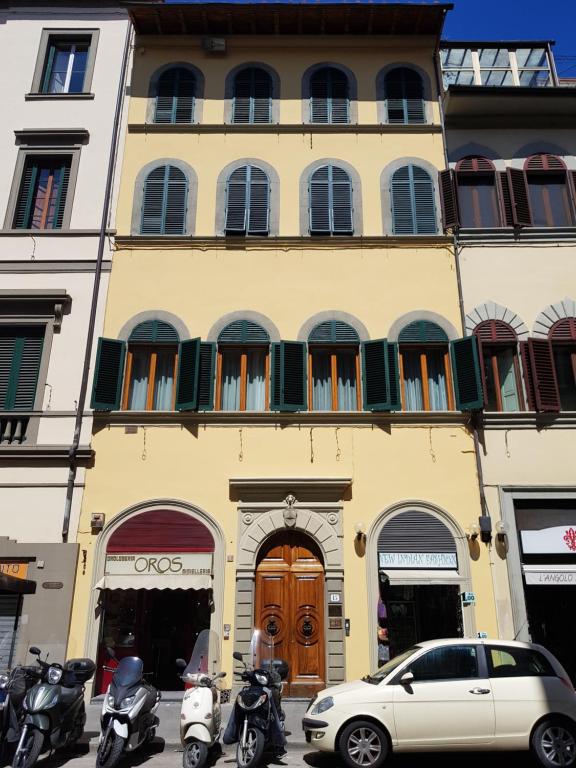
HomEdoFront
-
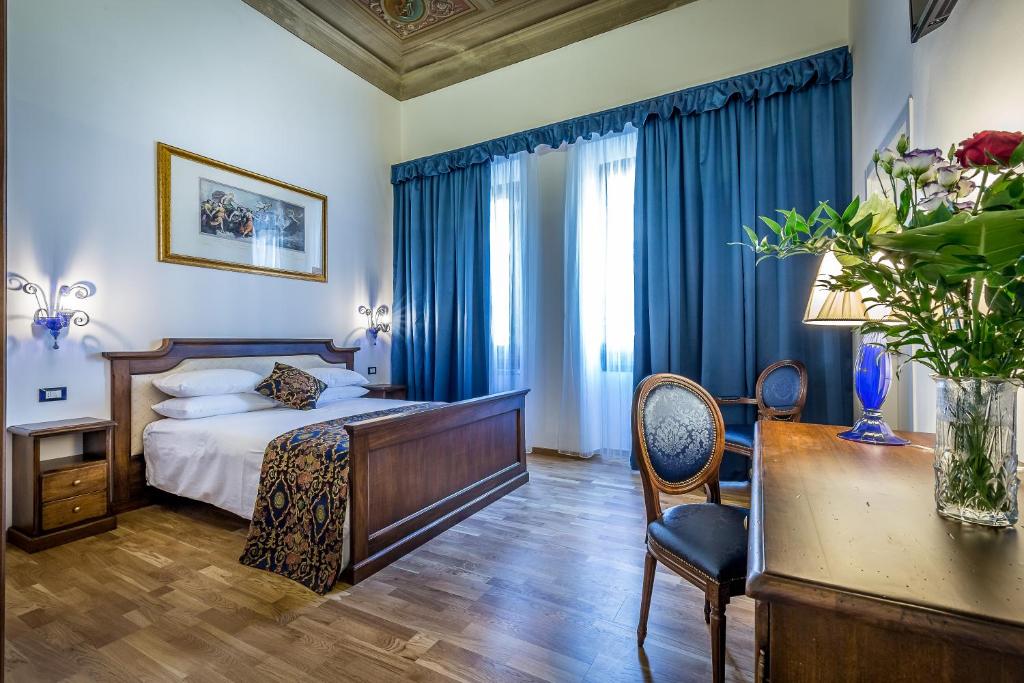
HomEdoRoom
HomEdo B&B–yes, I actually did type type that correctly haha–is a cute B&B right down the street from the Duomo. The rooms are some of the most spacious ones you’ll find in an older city like Florence, and the beautiful sunrise envelopes the open floor plans. Host Stefano goes out of his way to ensure you have everything you need, and his reputation grows as satisfied tourists depart each day.
($$$) Mid-Range Hotels
Perfect for Families & Extended Stays, $150-300+

-

PalazzoMartelliniRM
-
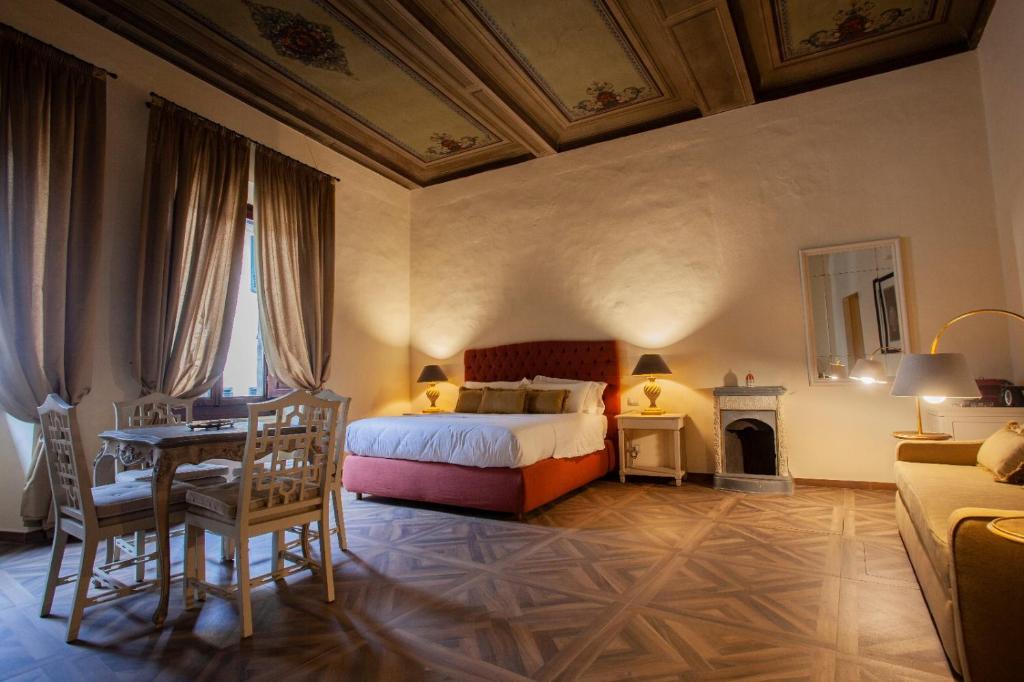
PalazzoMartelliniFRONT
Palazzo Martellini Residenza d’Epoca sits on the south side of the Arno River (majority of the hotels in Florence and this post lie north). That shouldn’t dissuade you, especially if you fancy yourself a foodie, as it sits near some of the most amazing eateries in Florence while offering a little less congestion of the more touristy districts. In the older, craftsman inspired district of Otrarno, this charming boutique is perfect for couples and seniors that prefer picturesque sunsets, quieter evenings while maintaining easy accessibility to the hotspots of Florence.

-
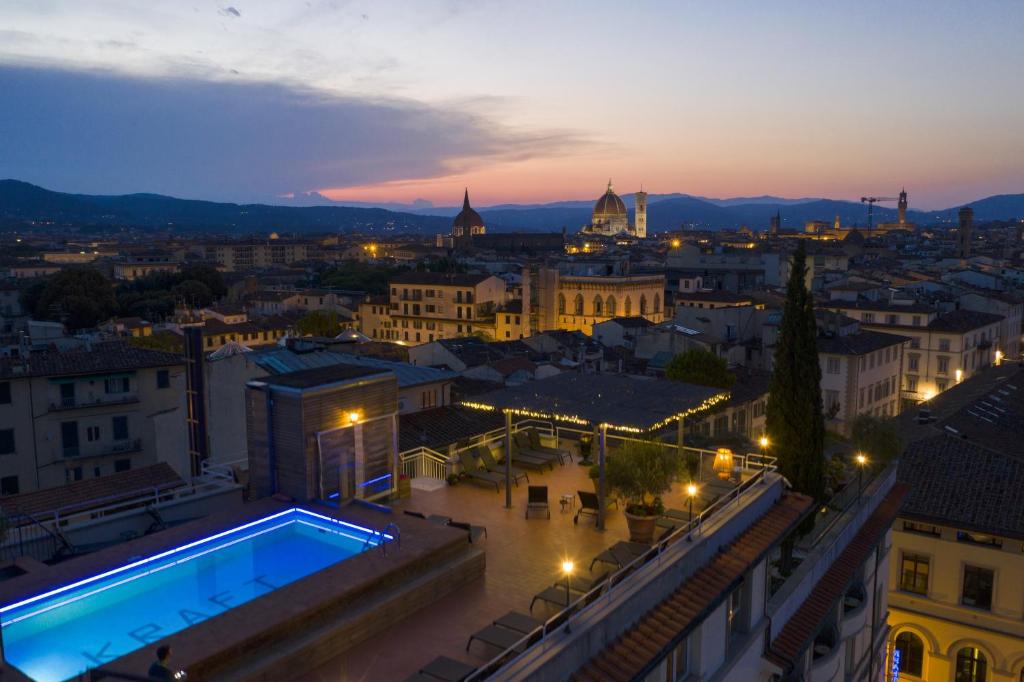
HotelKraftPOOL
-
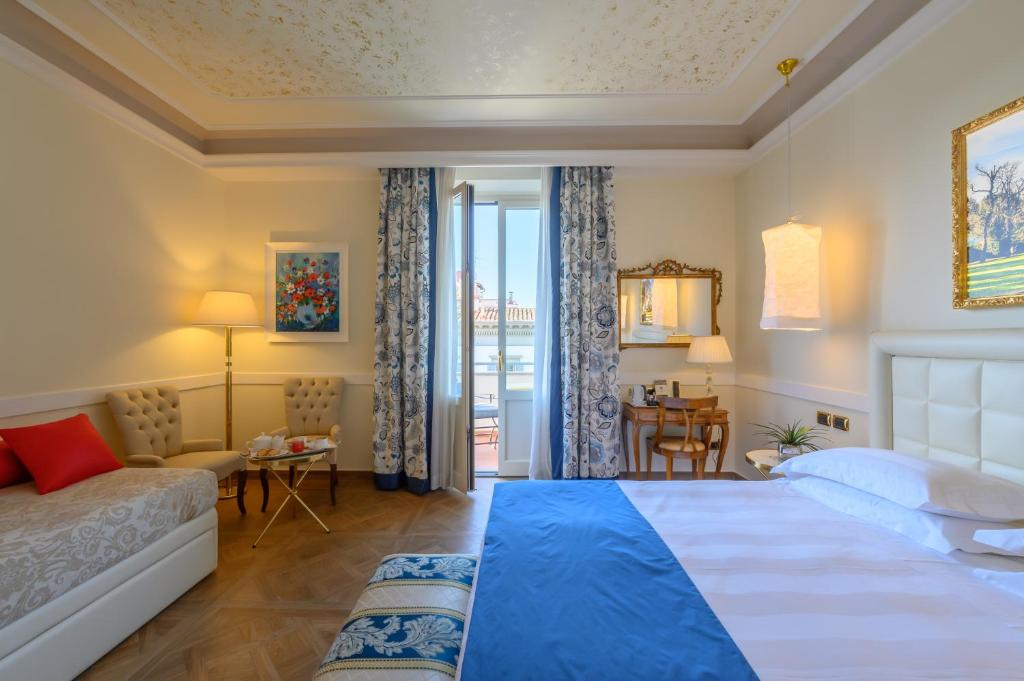
HotelKraftROOM
Hotel Kraft is another option for those seeking a somewhat quieter visit, sitting near the US Embassy and still just a 10 minute walk to the city center. The residential neighborhood is perfect for a stroll, though Hotel Kraft is most known for its rooftop. The pool’s crystal clear water shimmering from the blue hue of lights, combined with an iconic scenic backdrop, is the things that postcards are made of. Or really awesome Instagram photos that will make all your friends jealous.

-
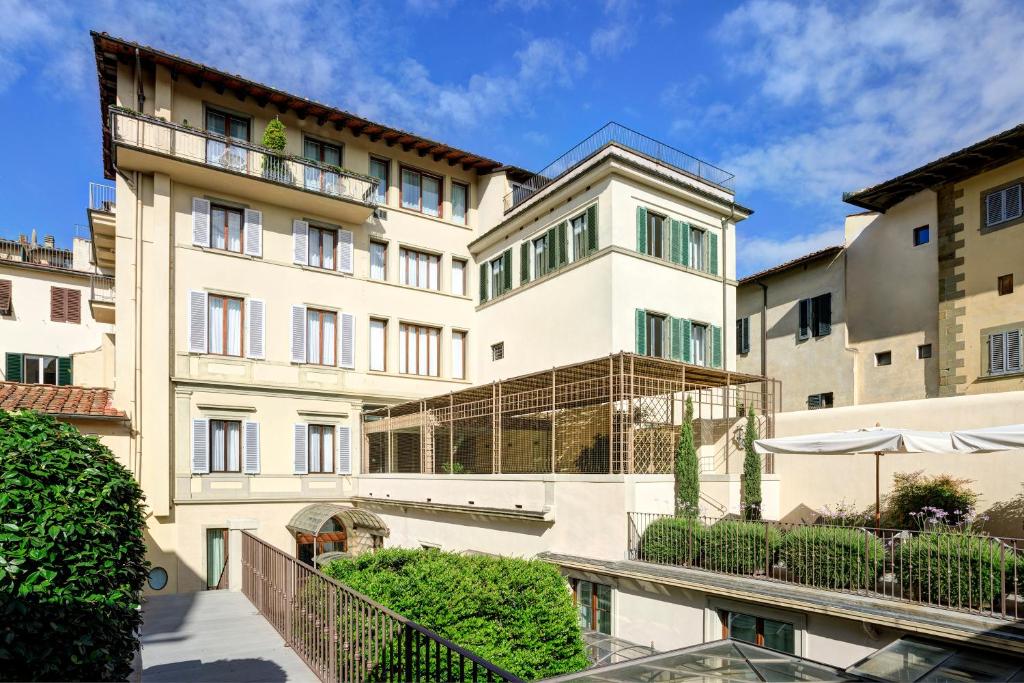
HotelOrtoView
-
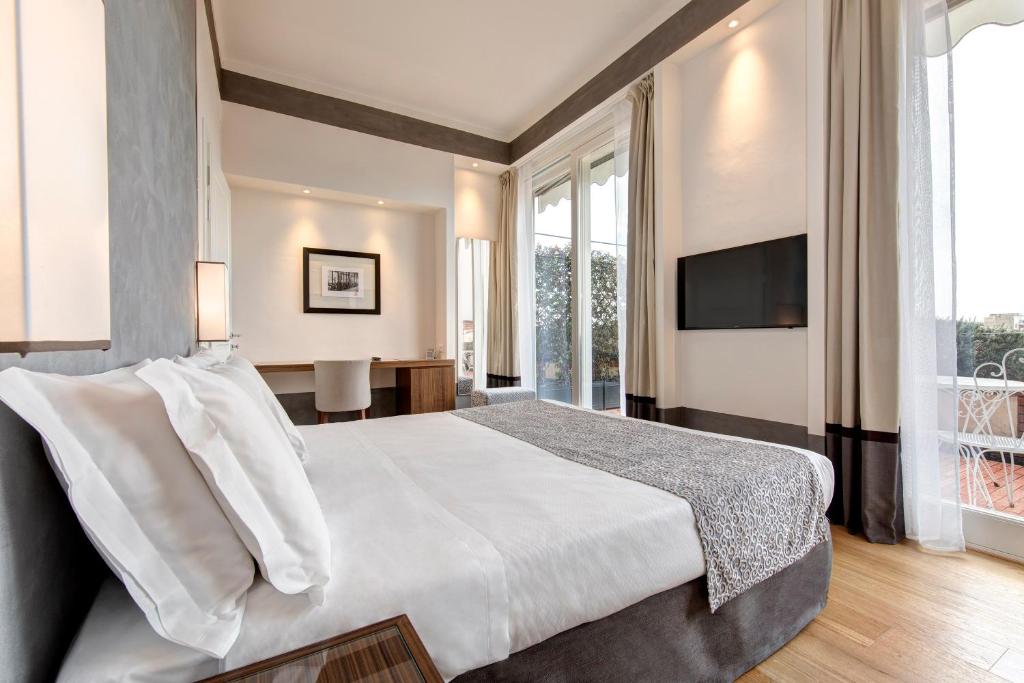
HotelOrtoRm
Hotel Orto de’ Medici is located in the city center, a 4-star hotel with an incredibly kind and helpful staff that are worthy of a 5th star. A 10 minute walk from the Duomo–one of the most visited sites in the world and featuring the Florence Cathedral. Features an awe-inspiring 16th century garden. Bonus points for being just a half mile from the Santa Maria Novella Train Station.

-
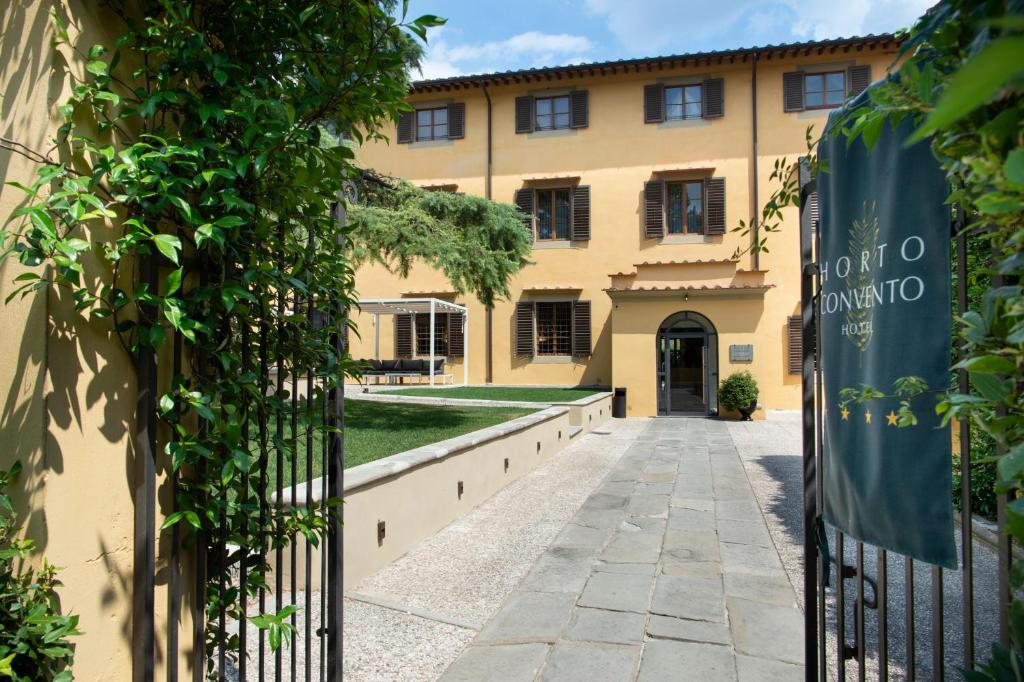
conventofront
-
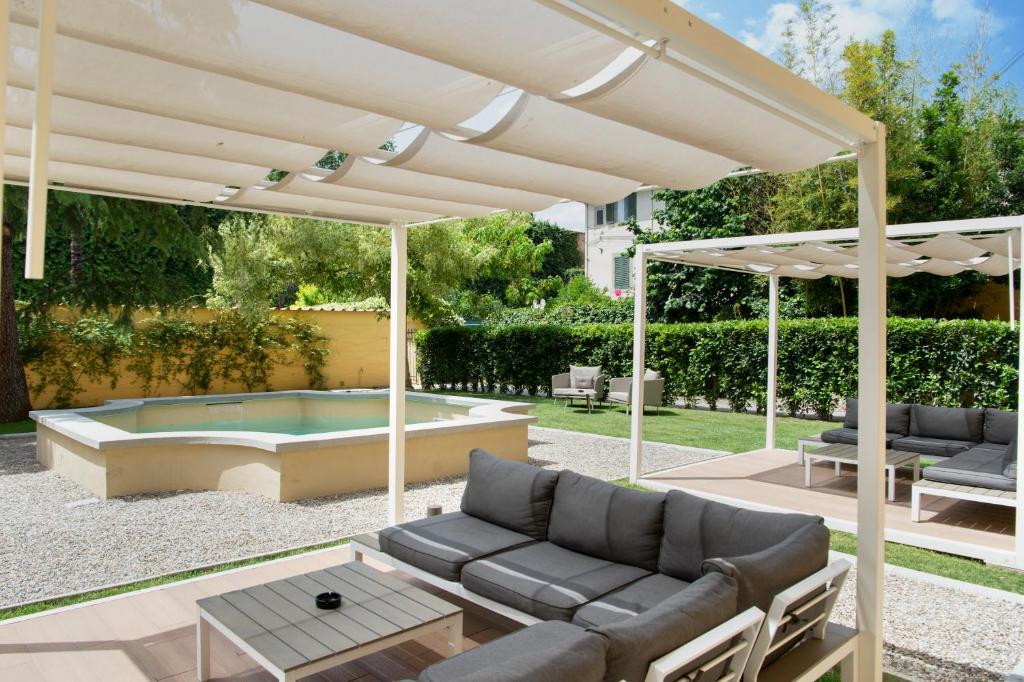
conventoyard
-
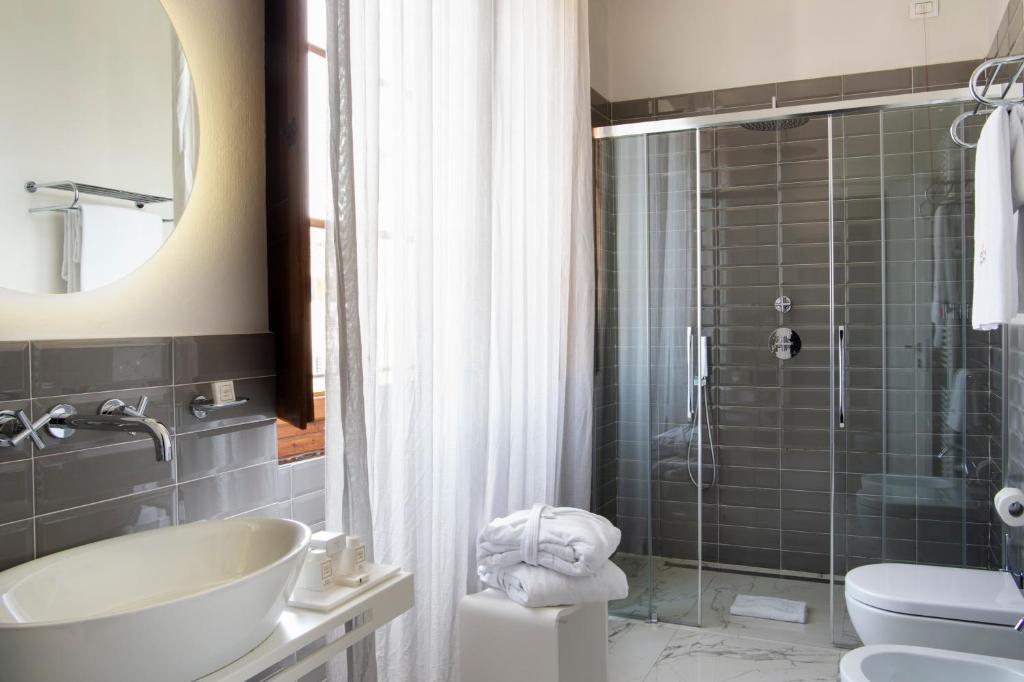
conventoroom
-
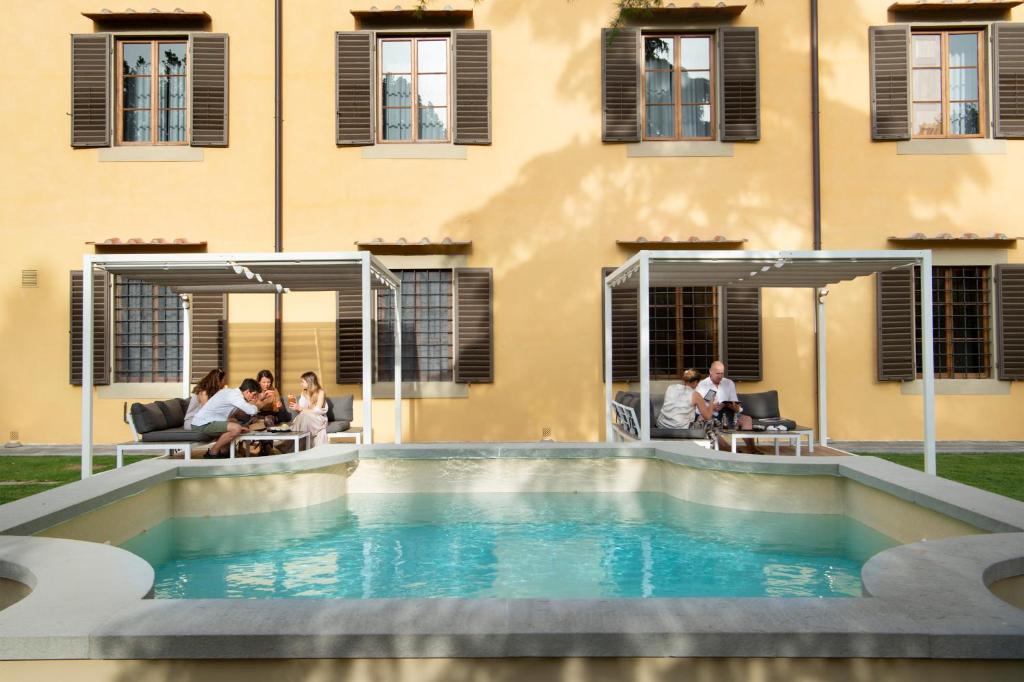
conventopool
Horto Convento is a boutique hotel that has a countryside feel to it, with a beautifully landscaped, enclosed property where luscious greenery abounds. Its location is part of the charm, steps from the Santo Spirito church, and just a 15 minute walk to the train station and short walk over the Ponte Vecchio bridge to the city center. It’s a great hotel for couples and newlyweds, sitting back from the nightlife yet close enough to engage in whatever Florence thrills suit you.
($$$$) A Few of the Best 4-Star Hotels
Often $350+/night, These Hotels Stand Out

-
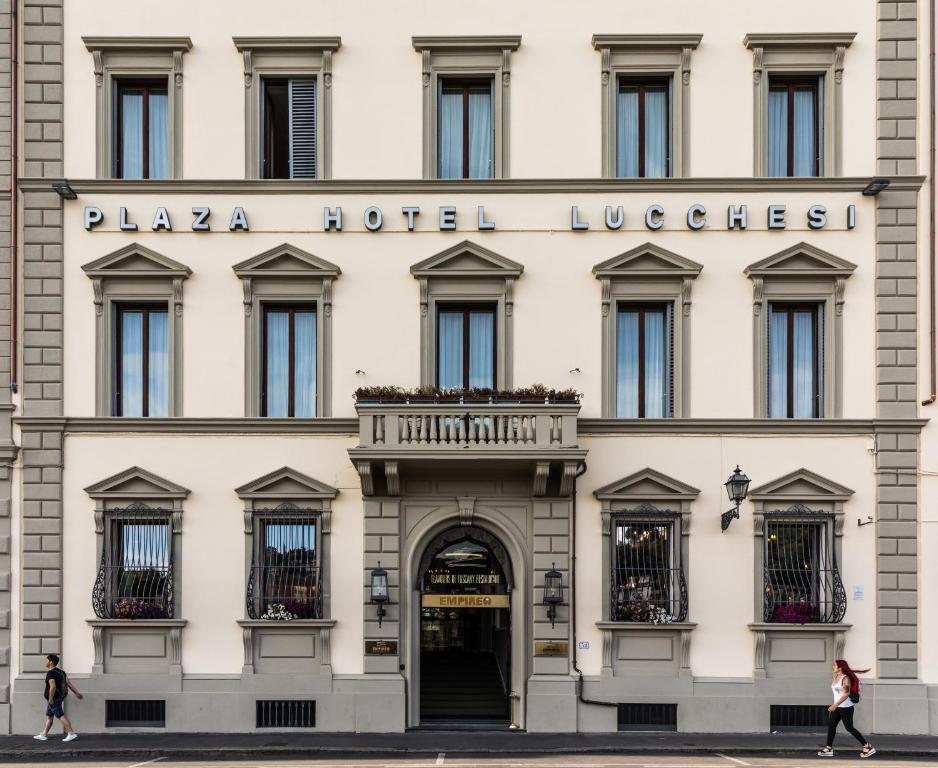
plazahotellucchesiFront
-

PlazaHotelBar
-
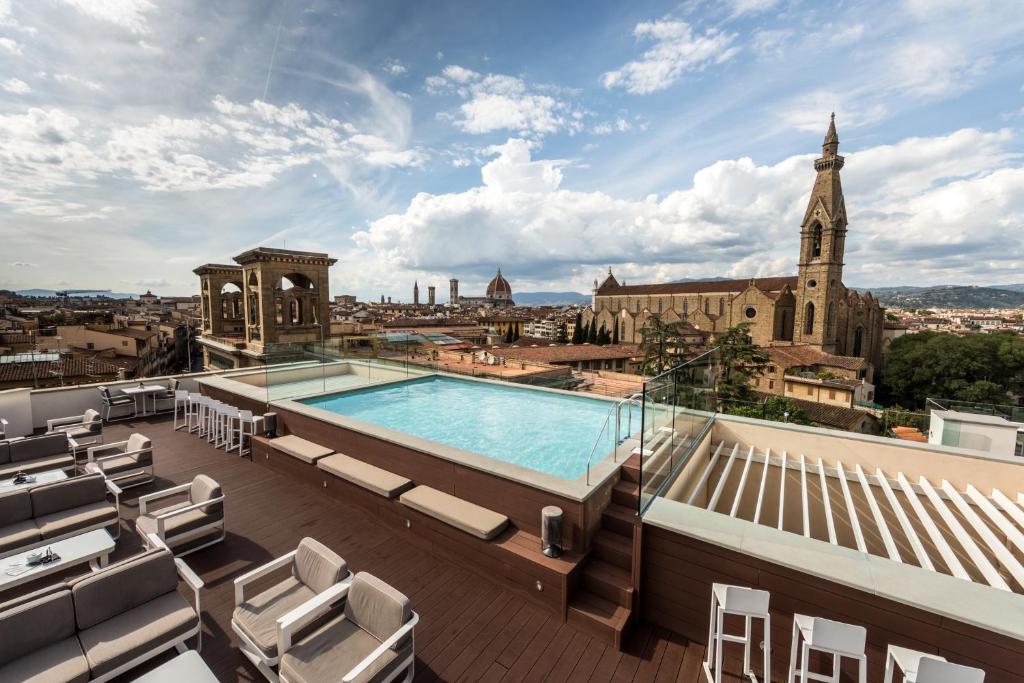
PlazaHotelLucchesiPool
-
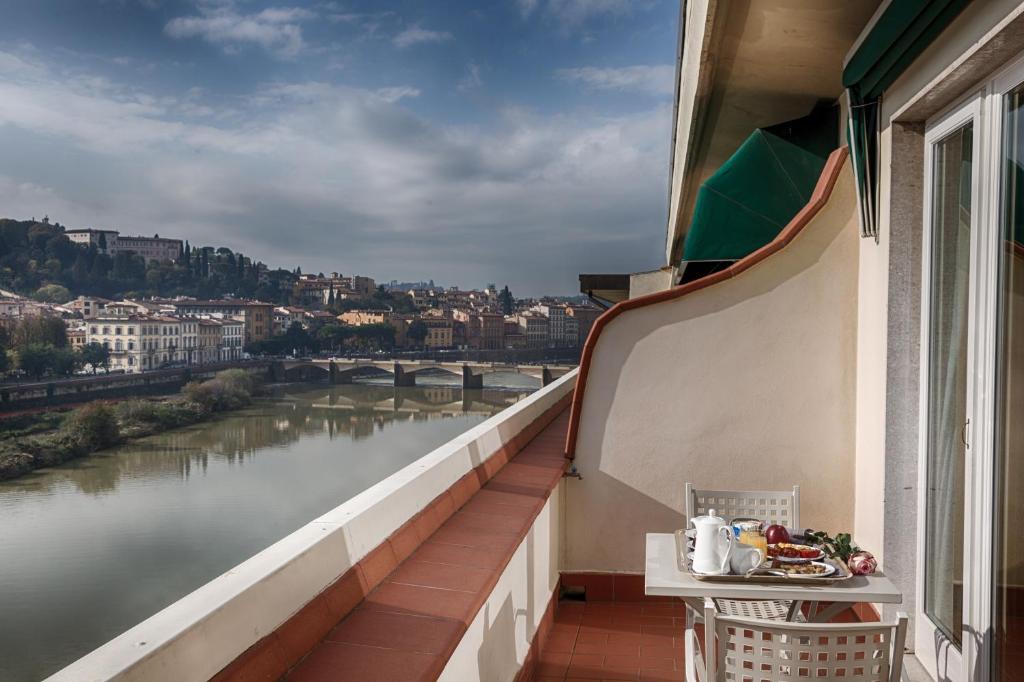
PlazaHotelRiverView
Plaza Hotel Lucchesi is, in one word, Beautiful. It sits right on the waterfront, with balconies that feel like they jut out over the river, a very Venetian type of feel. Has a simply insane rooftop pool, overlooking views of the Duomo. The staff routinely receives some of the highest grades/ratings in the city, a hotel trait I can absolutely confirm.
Of course what sets this place above the rest is the on-site restaurant. Some pretty amazing people working there, including the chef, Dario 🙂

-
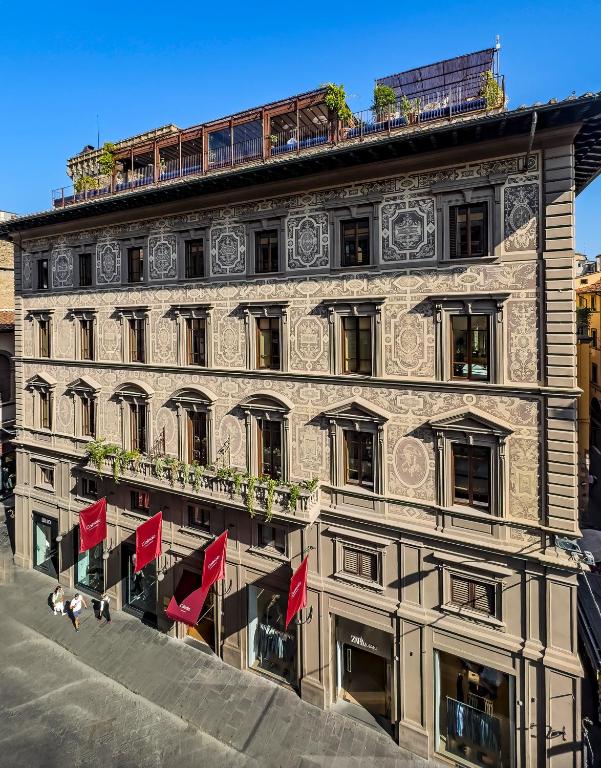
HotelCalimalaFront
-
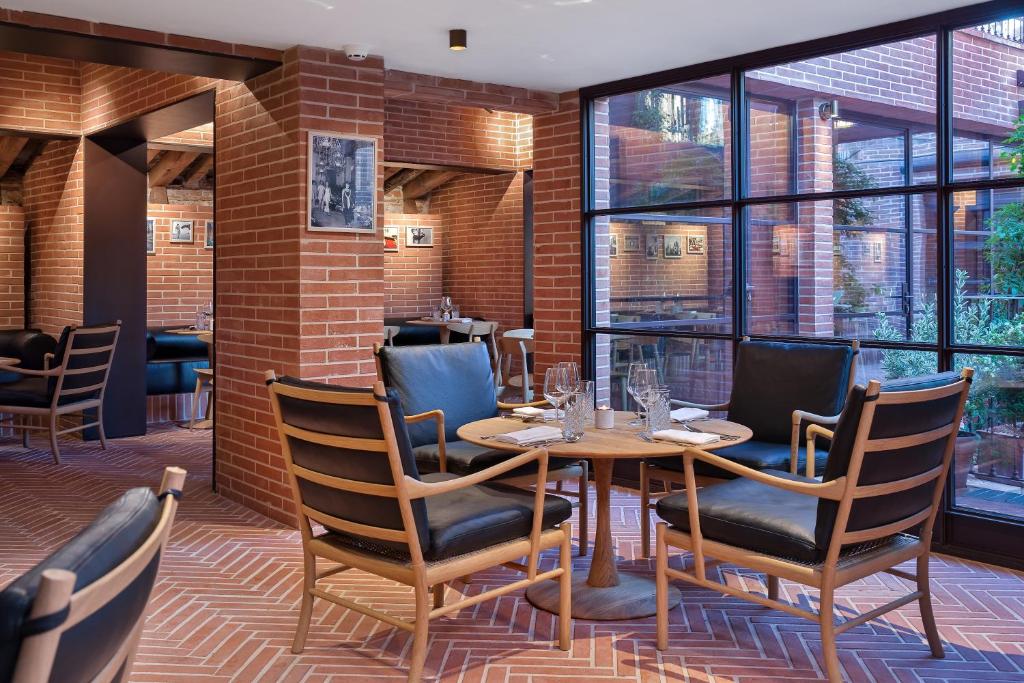
HotelCalimalaLounge
-
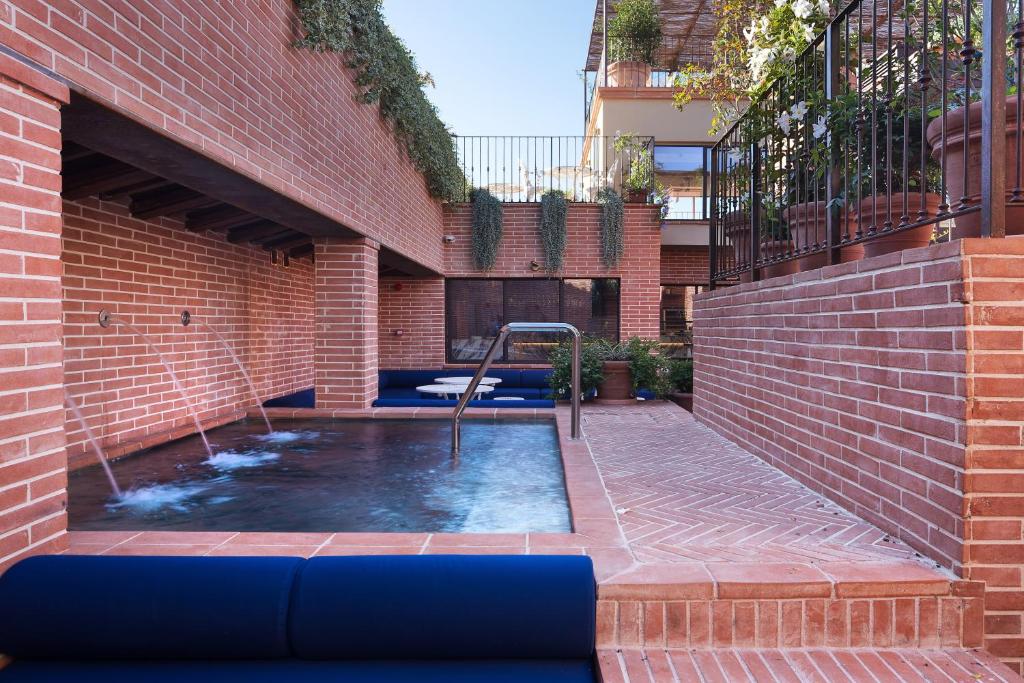
HotelCalimalaBrick
-
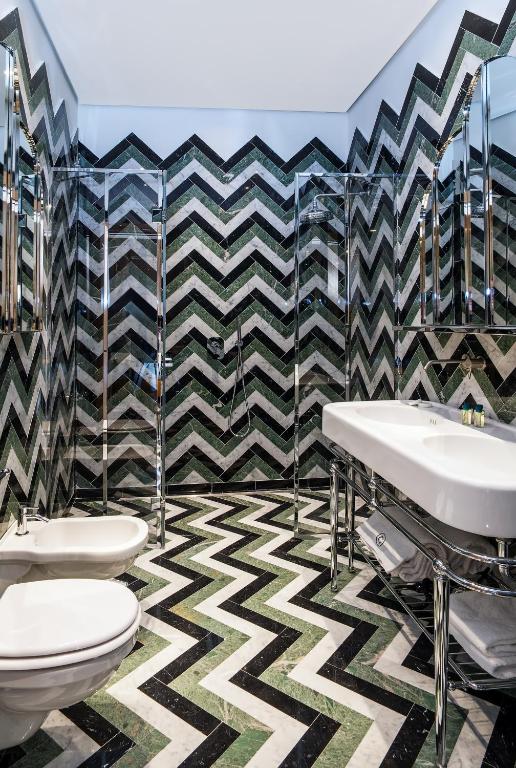
HotelCalimalaSeizure
Hotel Calimala might be the highest-rated 4-star hotel in Florence. It just…I guess the biggest compliment I could offer is that it lives up to every expectation you might have when visiting a highly regarded hotel. The grounds are spotless, the staff and front-desk are quick to help and assist, the atmosphere and ambiance is of relaxed sophistication. The only thing I can’t get on board with, however, is the decor in some of the bathrooms. For that I have no words. Its not all the rooms, but its a lot of them, and they’re like some weird 60’s retro seizure-inducing acid trip of design.

-
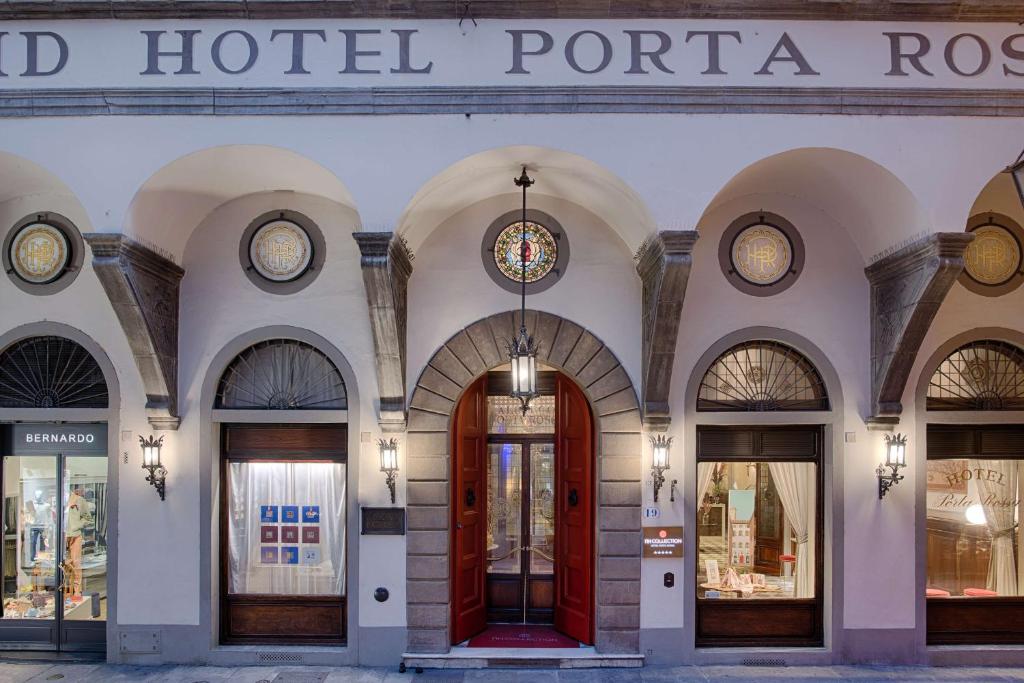
portarossafront
-
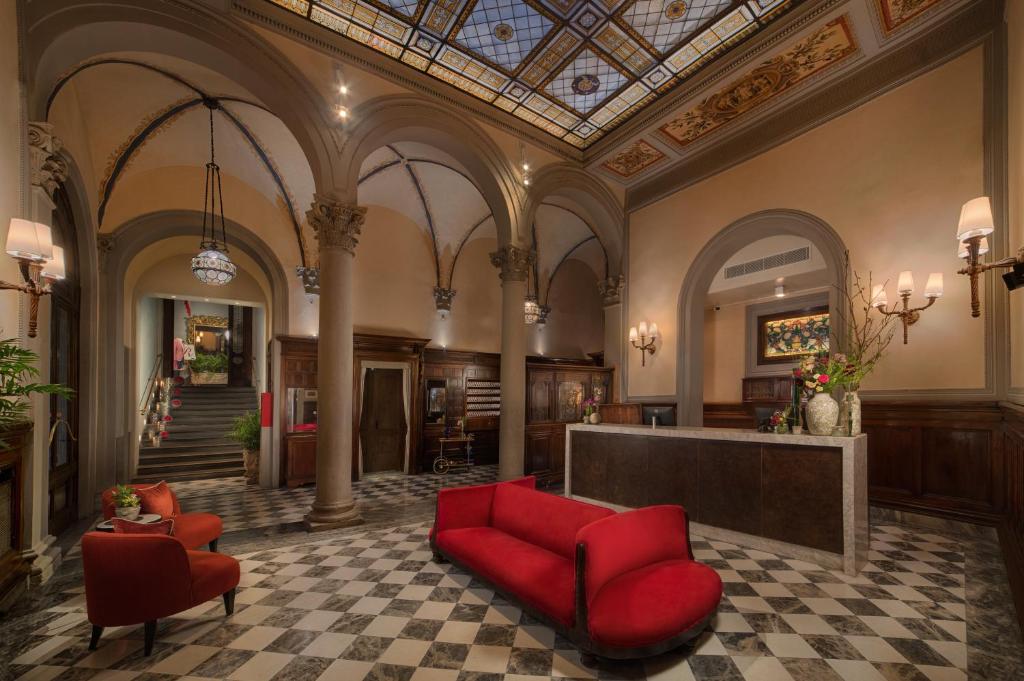
portarossalobby
-
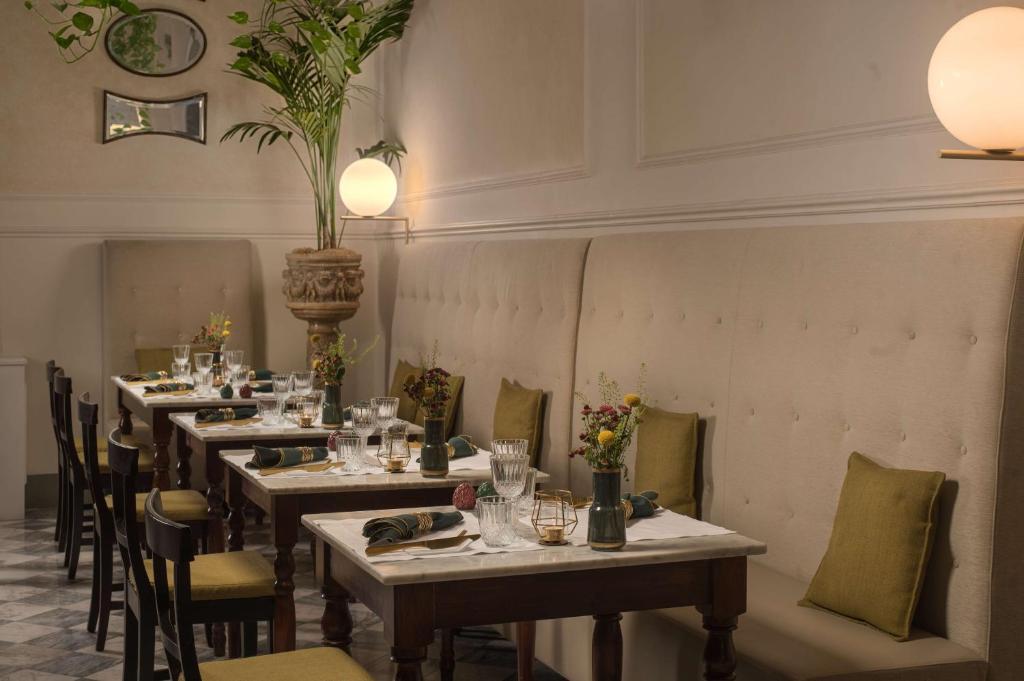
portarossarestaurant
-
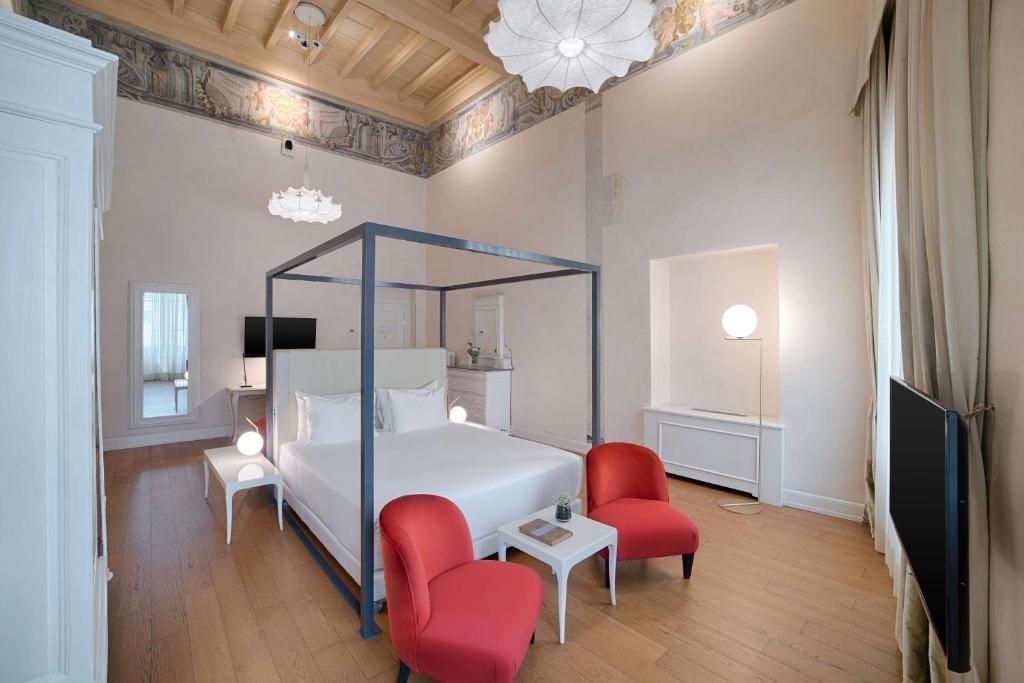
portarossaroom
NH Collection Firenze Porta Rossa is a 5 star hotel that, quite frankly, just delivers. The “NH” chain is one of my favorite, and I’ve never had a bad experience–or honestly even one that didn’t exceed my increasingly high expectations. The breakfast buffet is a feast all its own, the rooms have mini-bars and it even shares its construction within the 12th-century Monalda Tower. Its also a few hundred feet from the Uffizi, a place of ancient sculptures and paintings that is a must for every history and art aficionado.
($$$$$) Bucket-List Luxury Accommodations
At Upwards of $1k/night, Perfect for Once-In-A-Lifetime Type Trips

-
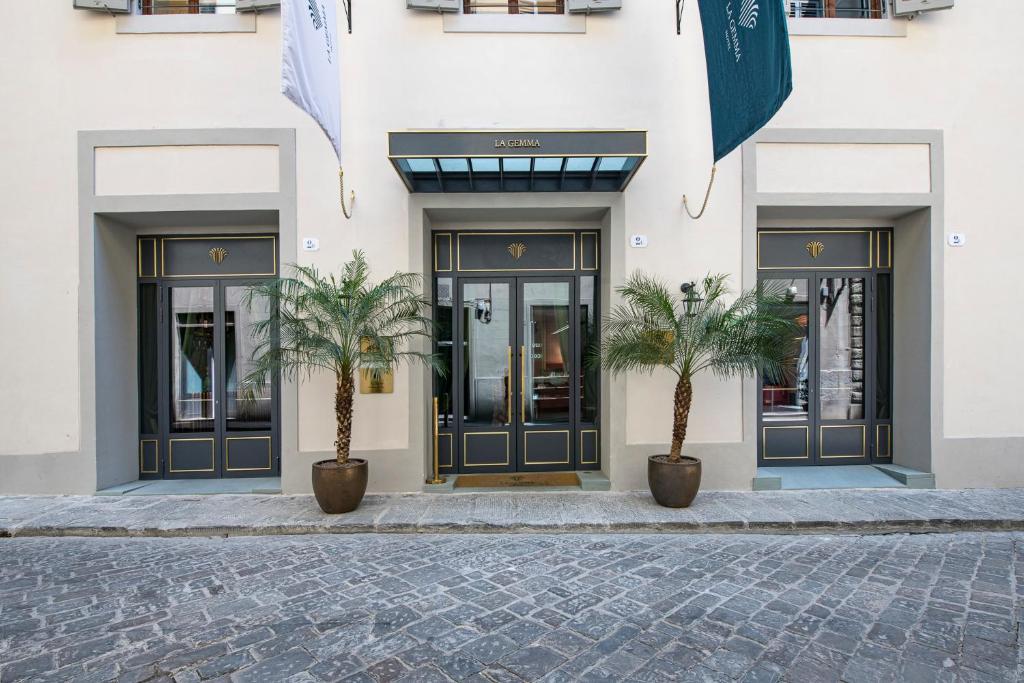
LaGemma
-
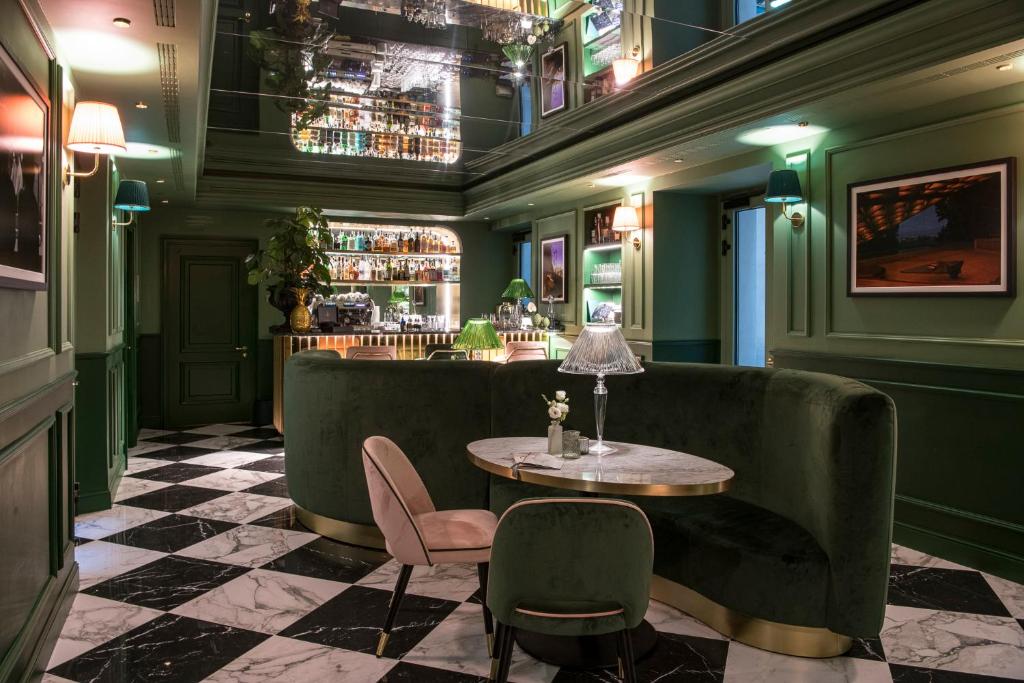
LaGemmaLounge
-

LaGemmaRm1
-
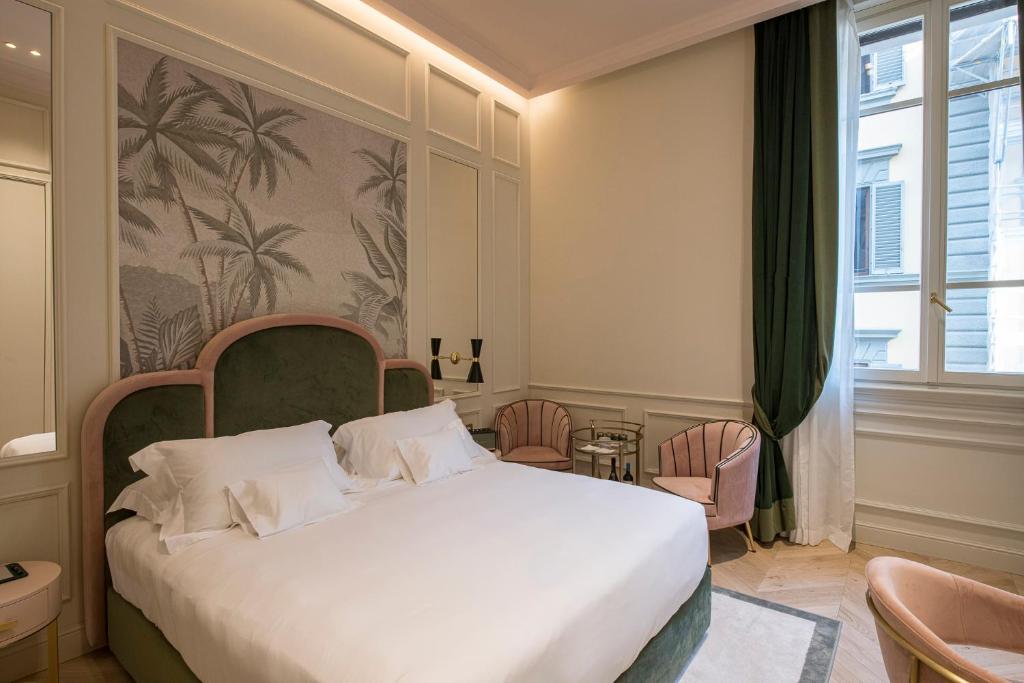
LaGemmaRm2
Located one street over from Hotel Calimala, Hotel La Gemma is an exquisitely decorated 5-star hotel that is a favorite among honeymooners and newlyweds. It has an impressive multi-lingual staff that speak French and Spanish in addition to English and Italian, and, as you would expect from a 5-star hotel, it boasts a variety of upscale amenities and room features. There’s also a spa center, sauna and hot tub. You know, the types of things that make you never want to leave a place…and you might not want to, despite its desirable location in the middle of the action in Florence.

-
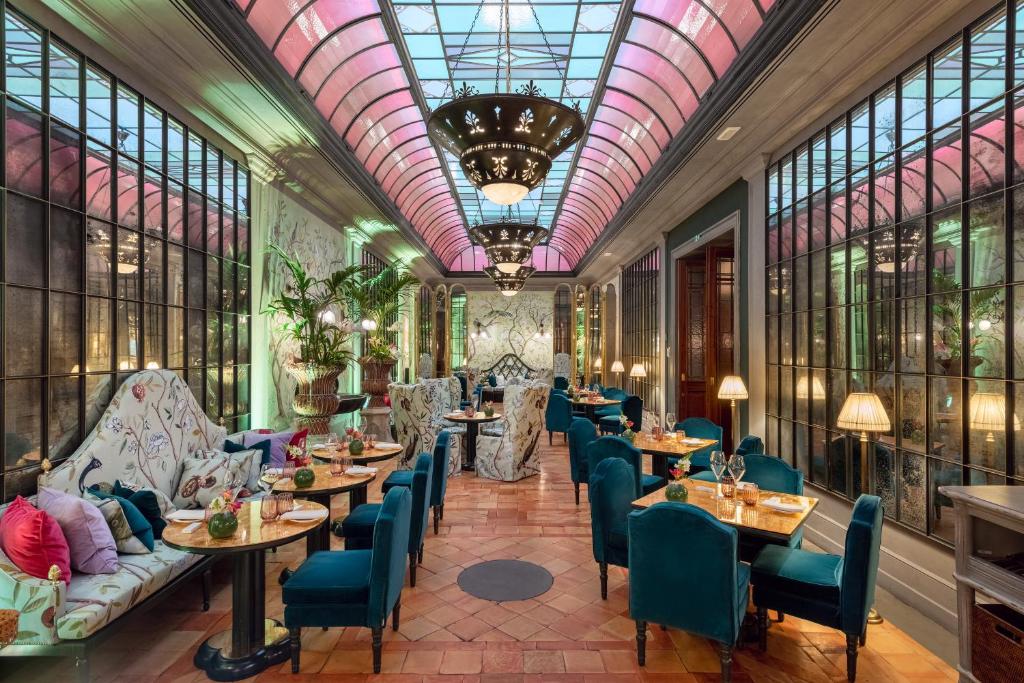
Helvetia&Bristol Firenze1
-
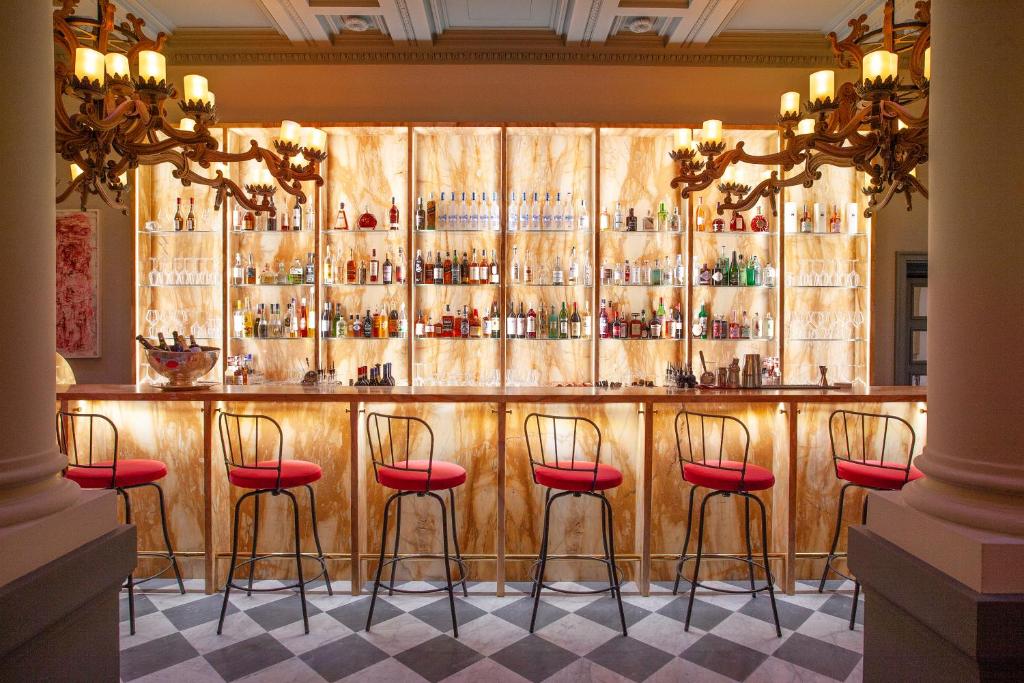
Helvetia&Bristol FirenzeBar
-
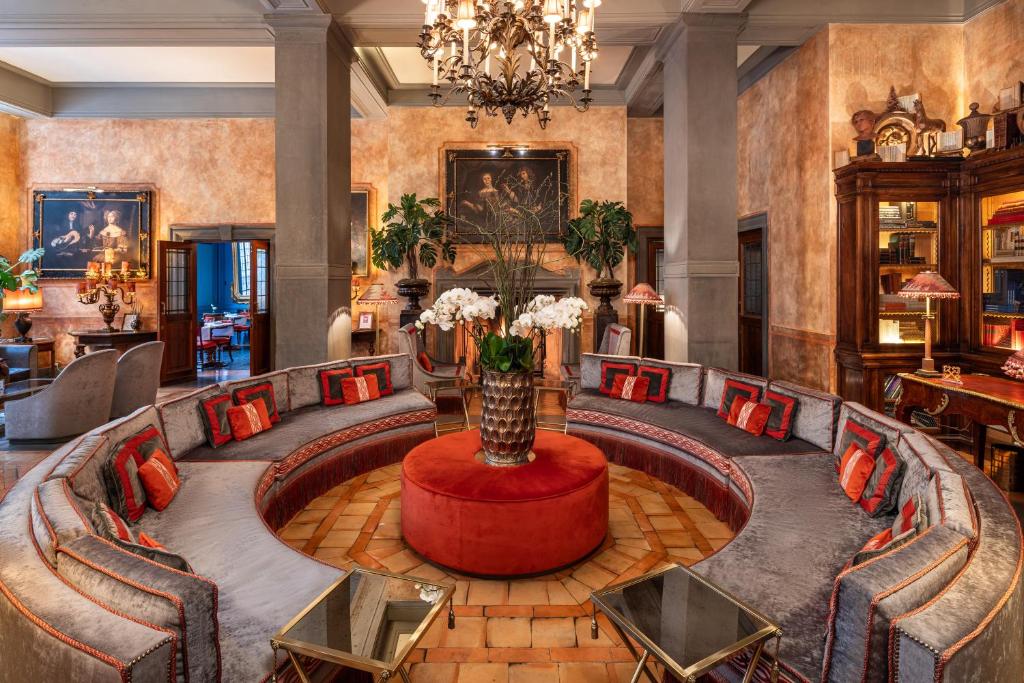
Helvetia&Bristol FirenzeLounge
-

Helvetia&Bristol Firenzeroom
Helvetica & Bristol Firenze is as grandiose as you would expect with a name like that (I mean, even the Helvetica font is kinda fancy, no?). It sits in a 19th century palazzo, one block from Piazza della Repubblica, and is just feet from the Via de Tornabuoni, a pedestrian street famous for its stylish high-fashion luxury boutiques and shops. Your Instagram Selfies will never be the same again.

-
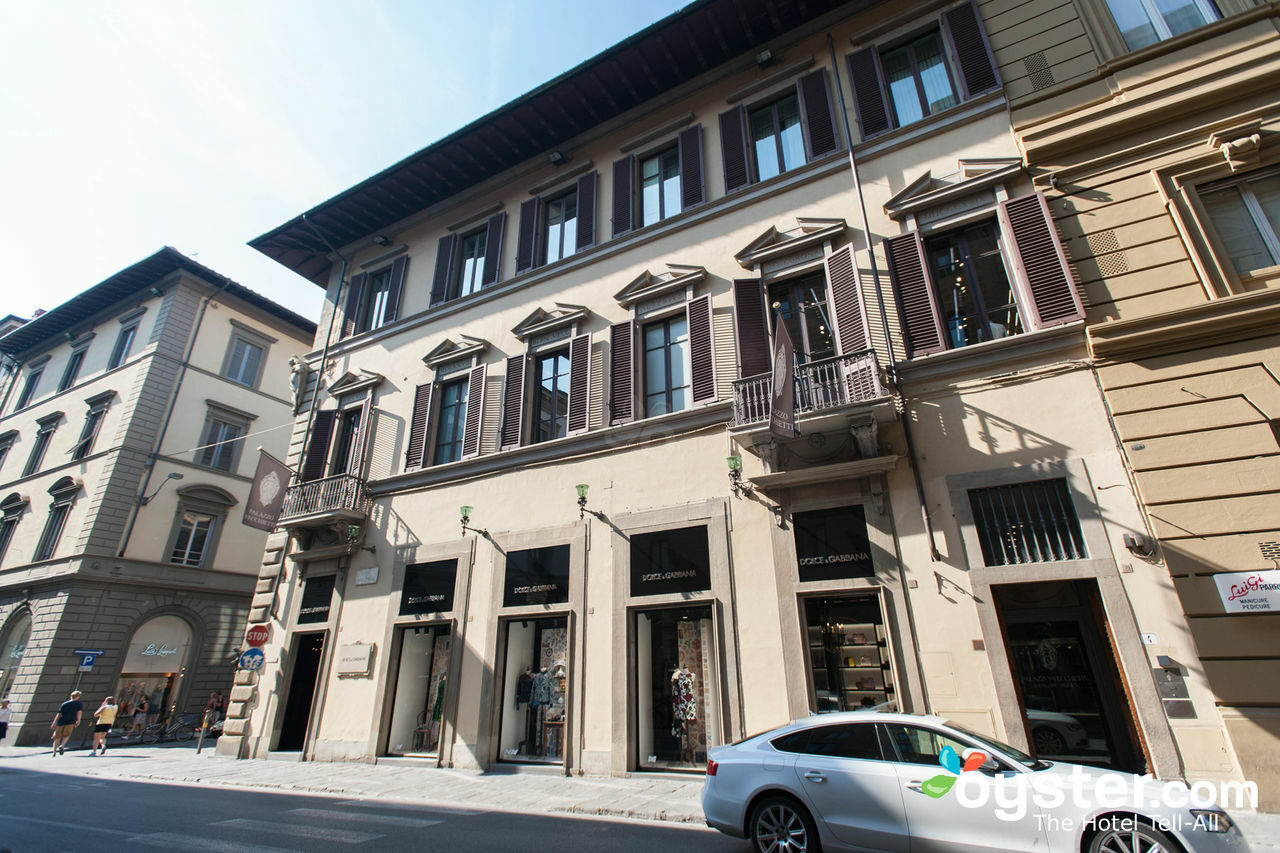
palazzo-vecchietti-hotel-florence-photo-54
-

palazzolivingspace
-
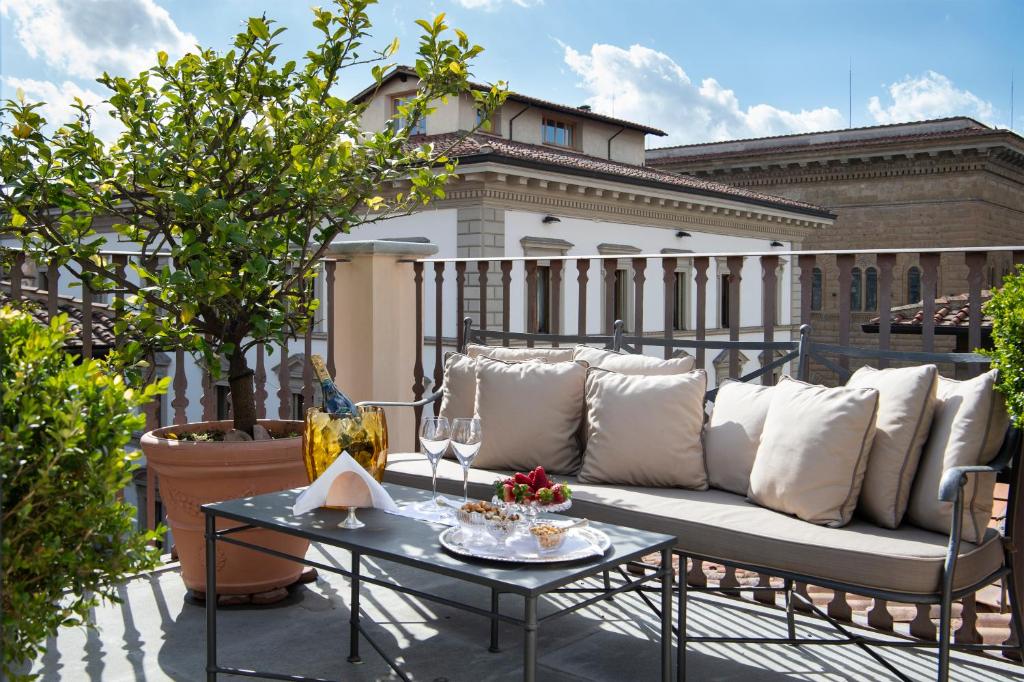
palazzobalcony
-
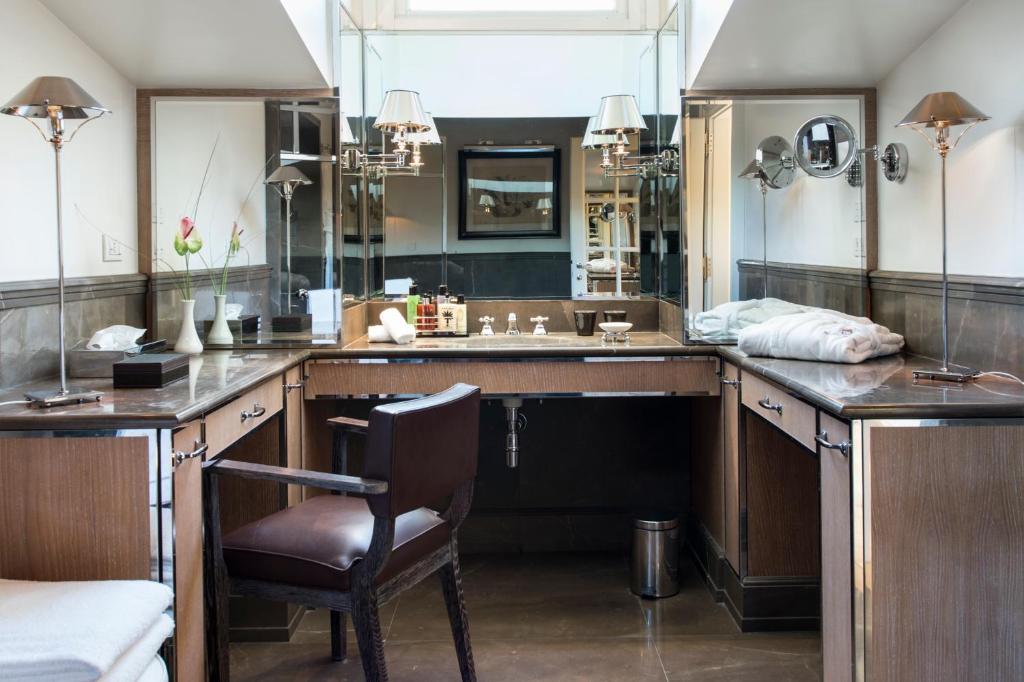
palazzobathroom
The Palazzo Vecchietti might be the most unassuming 5-star luxury hotel ever created. Some times you hear people call something “steeped in history”. Well, wow…here you can take that literally. It sits in a 16th-century building designed by Giambologna, and the noble family that is namesake to the building is found in the literature of some guy named Dante Alighieri. You know, as in Dante! Everything about the hotel is elegant, almost feeling like it was just renovated and designed yesterday. Even its location, in one of the more exclusive shopping districts, is elegant and high class. Of course…book early, because there is limited number of rooms and, well, a whole lot of demand.
Keep on the lookout for another edition of Hotel Recommendations, where you will find some of my favorite and most preferred hotels throughout Italy.
Thanks for reading, and hope to see you here in Italy soon!
Be Sure to Check Out My Custom Amazon Recommendations Specific to this Blog! Personally Selected Items to Help Keep Your IDs, Passports, Travel Documents & More Safe During Your Travels!


